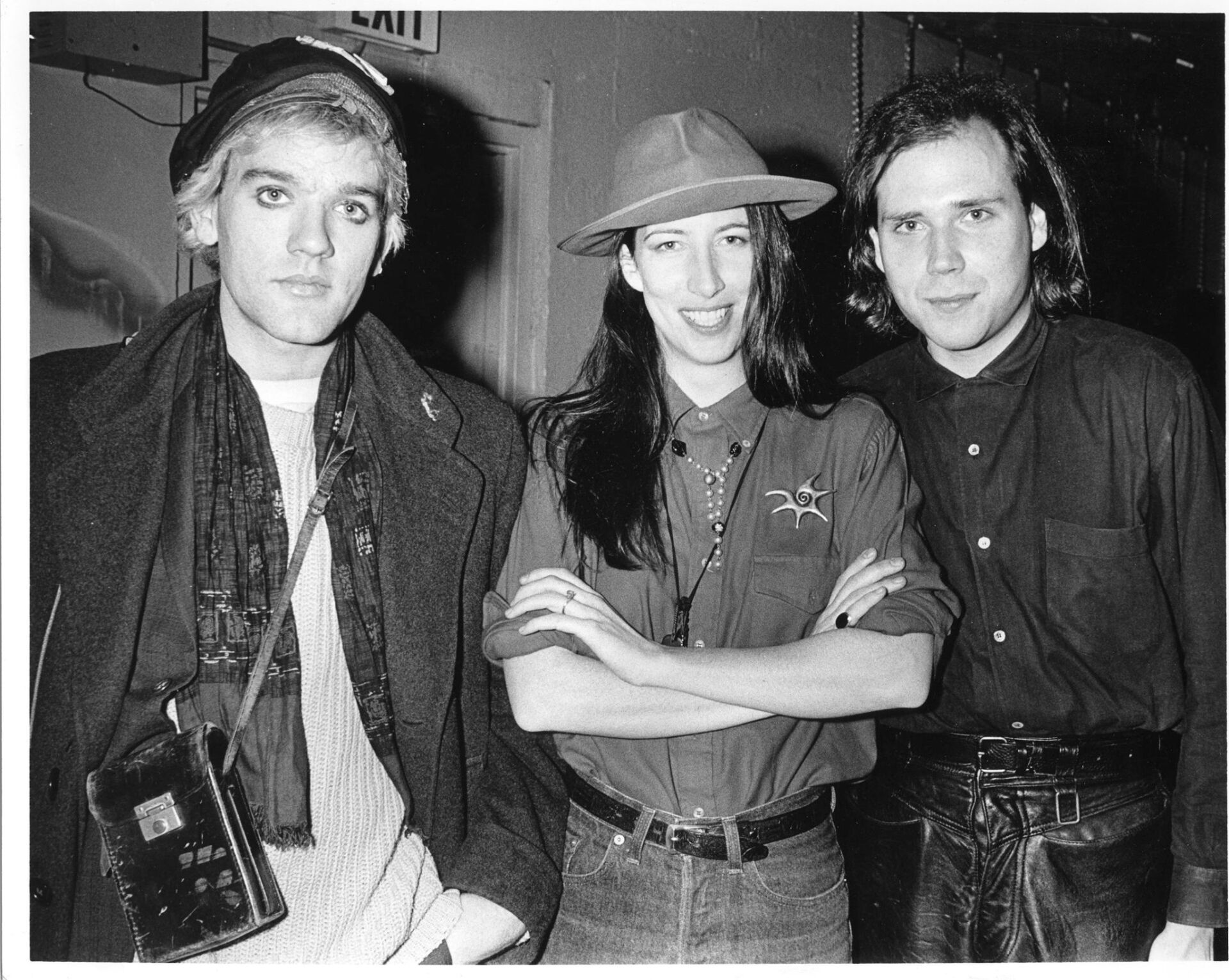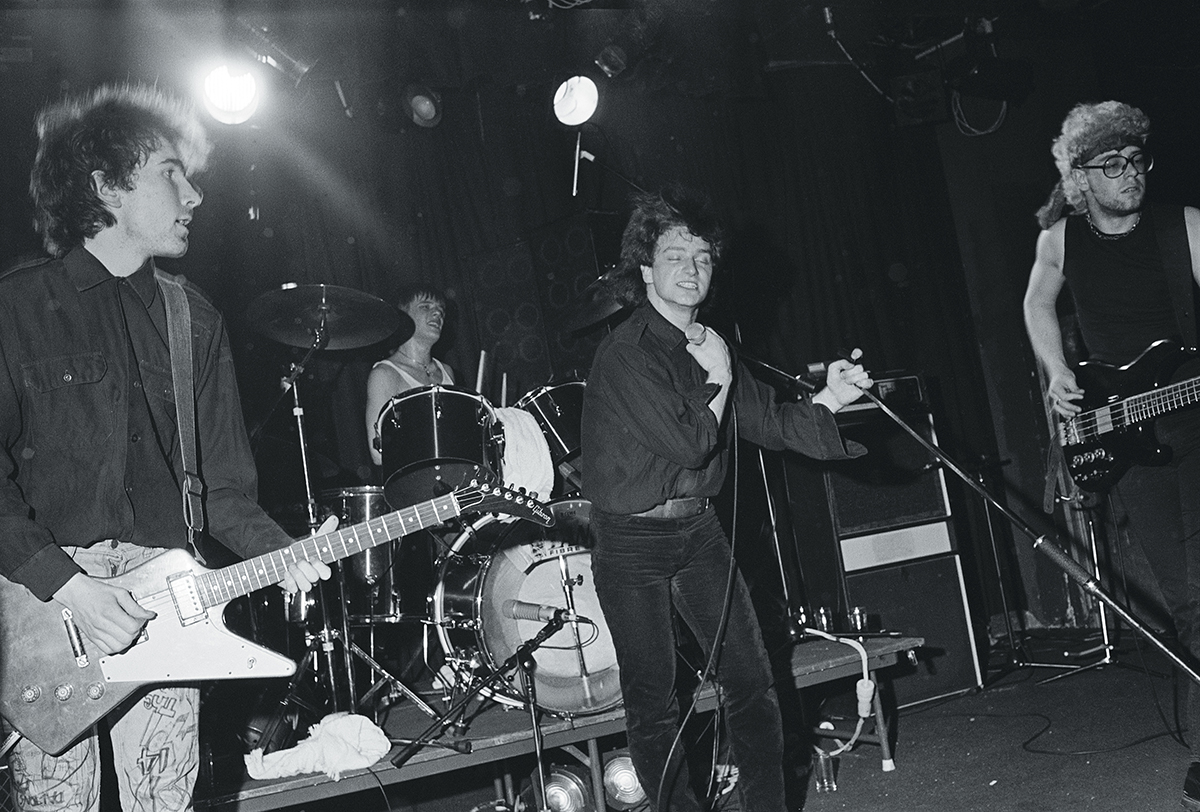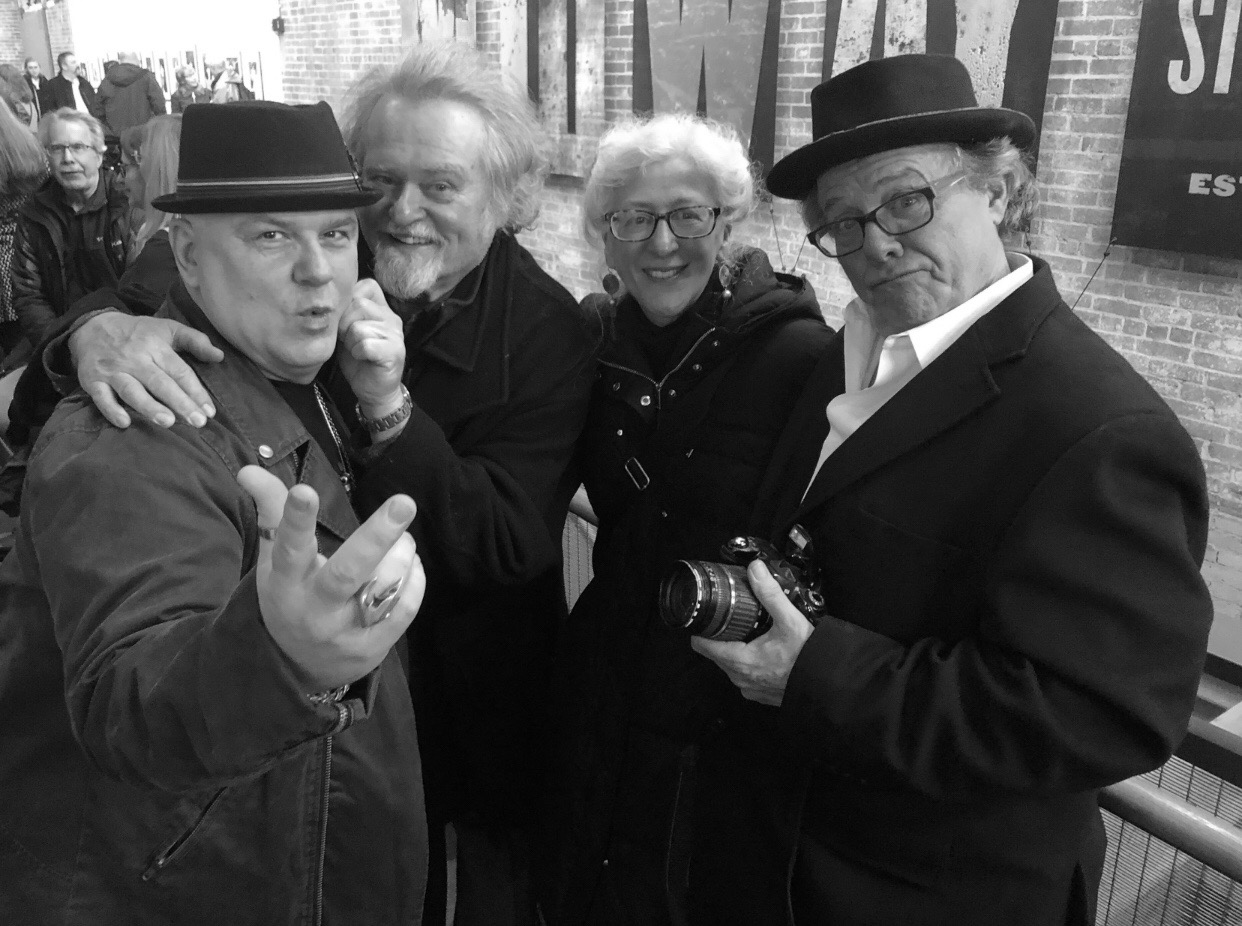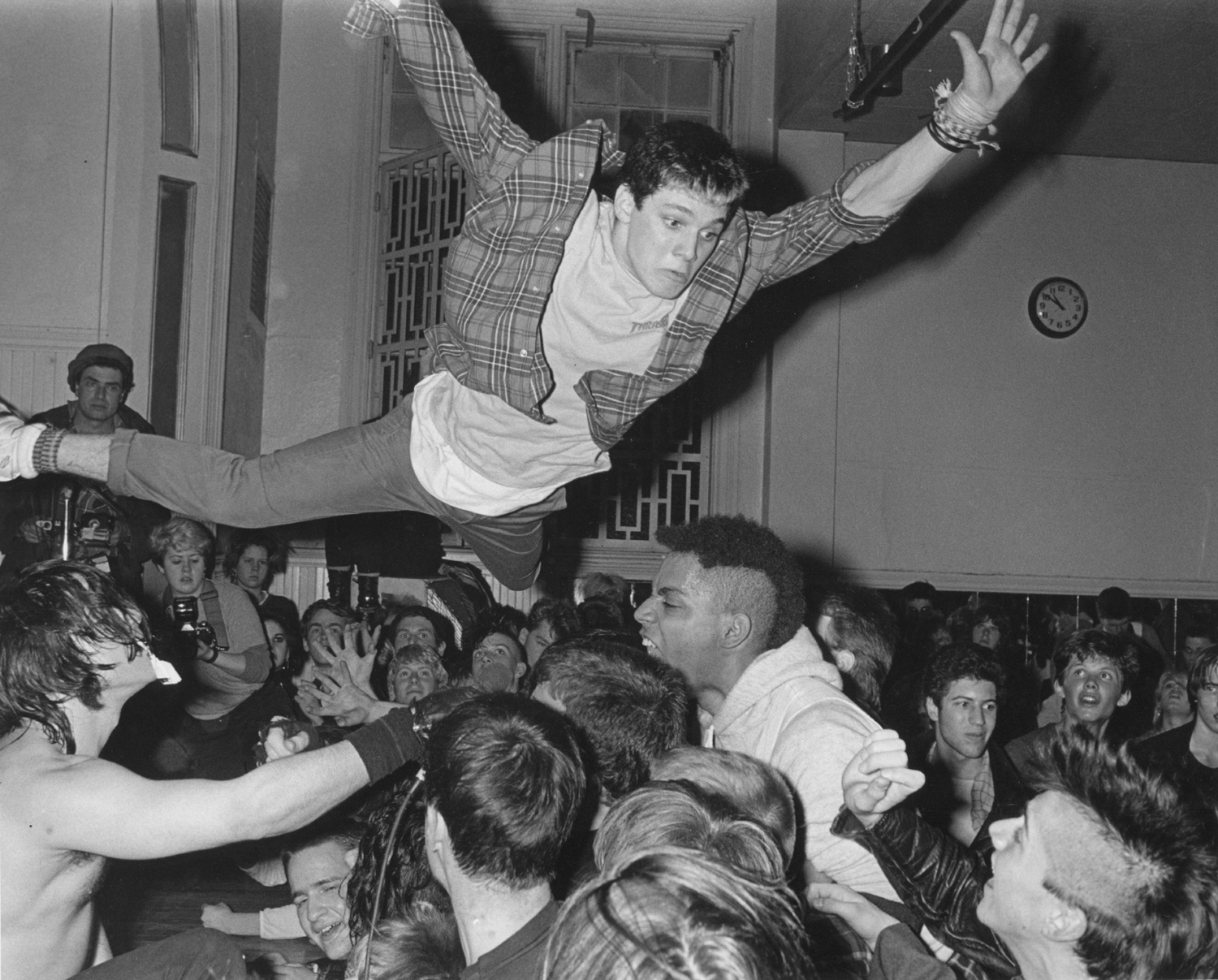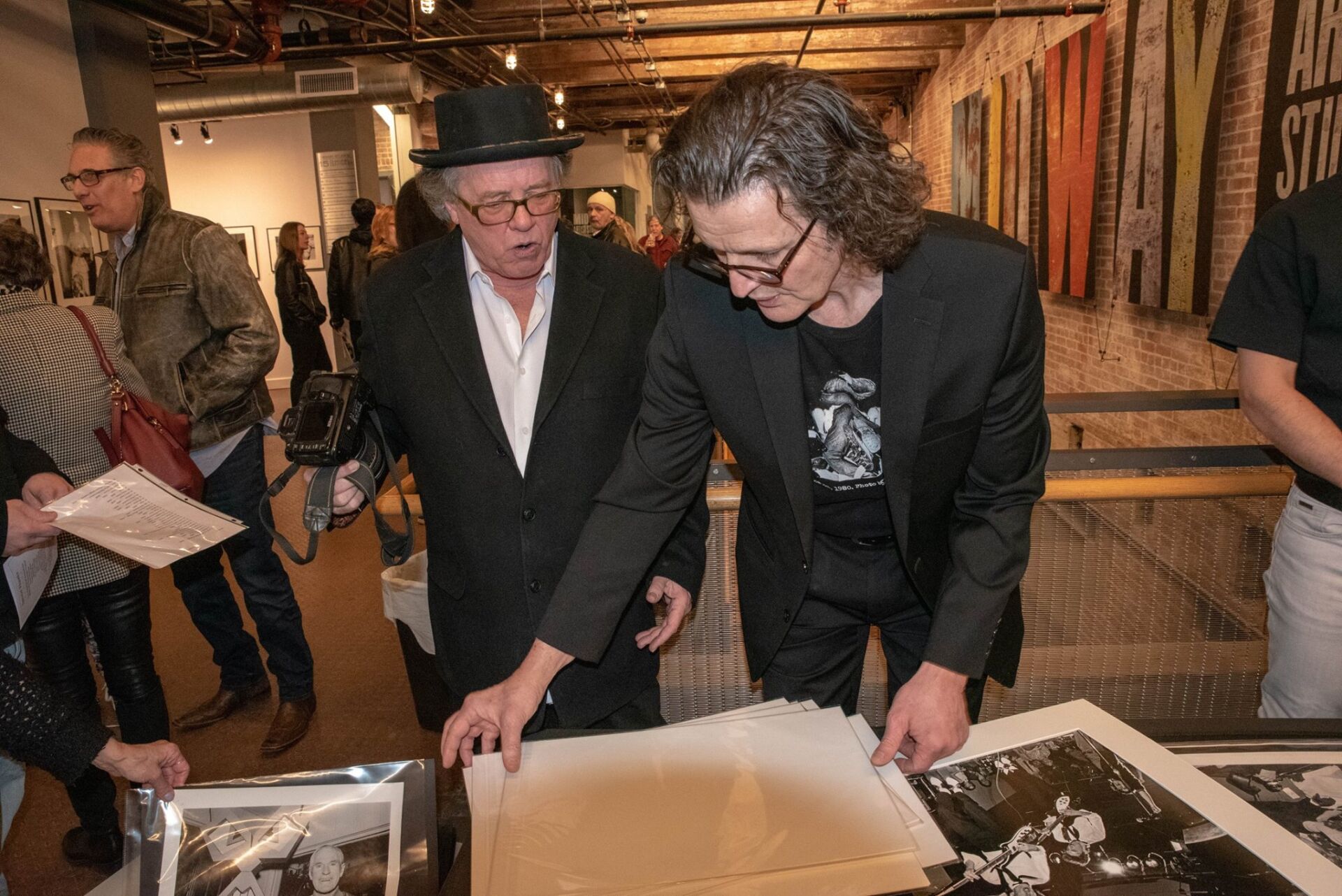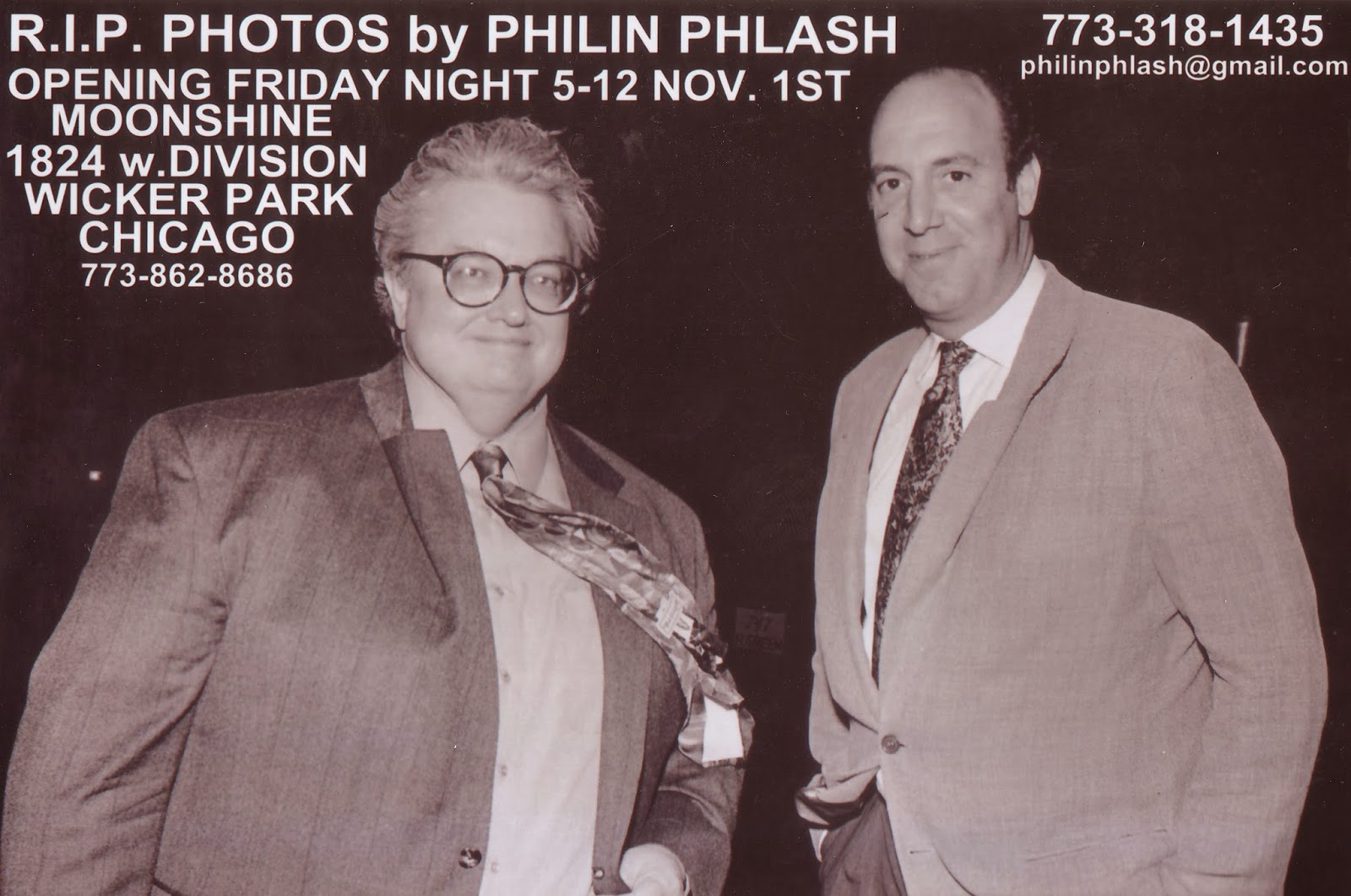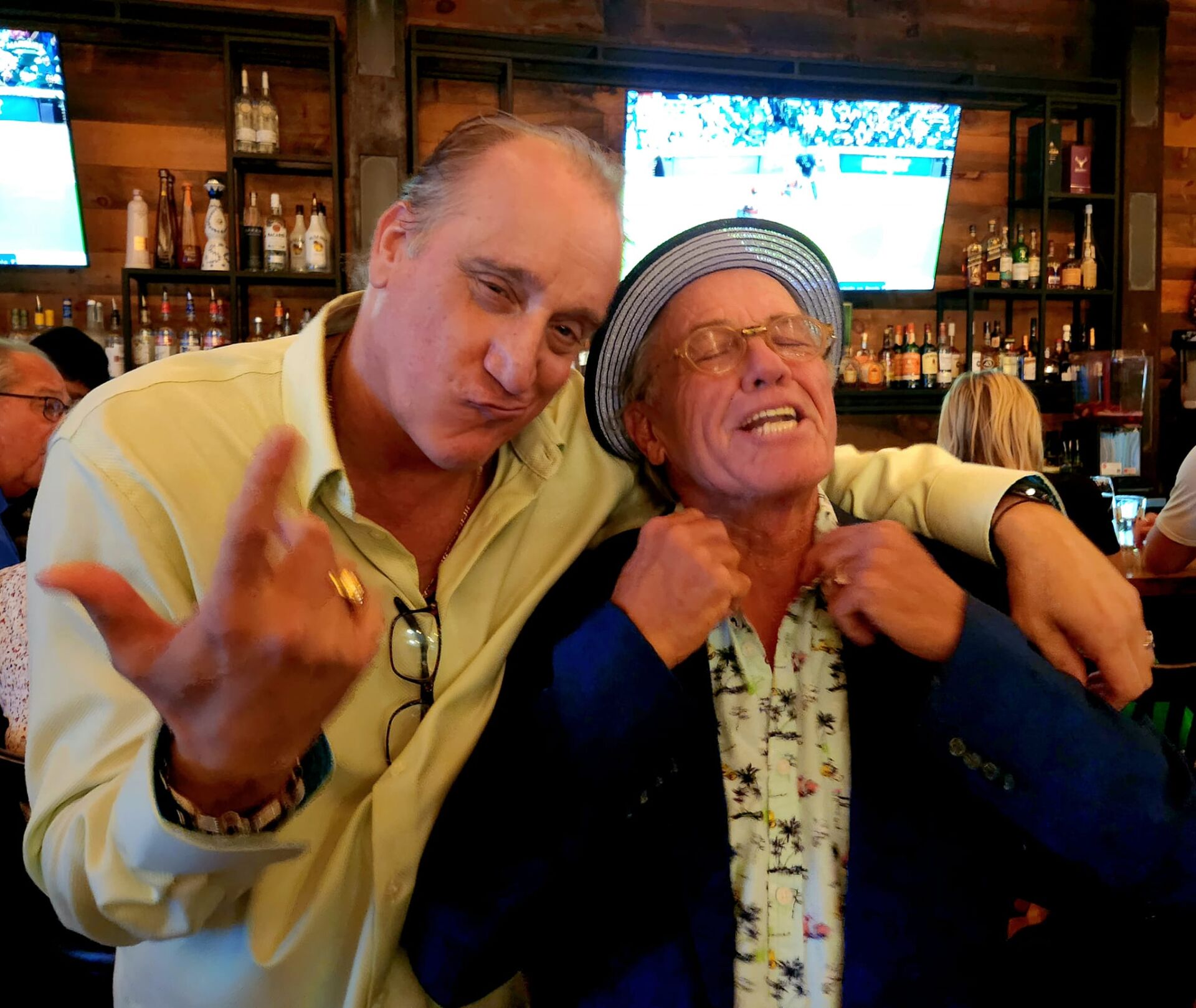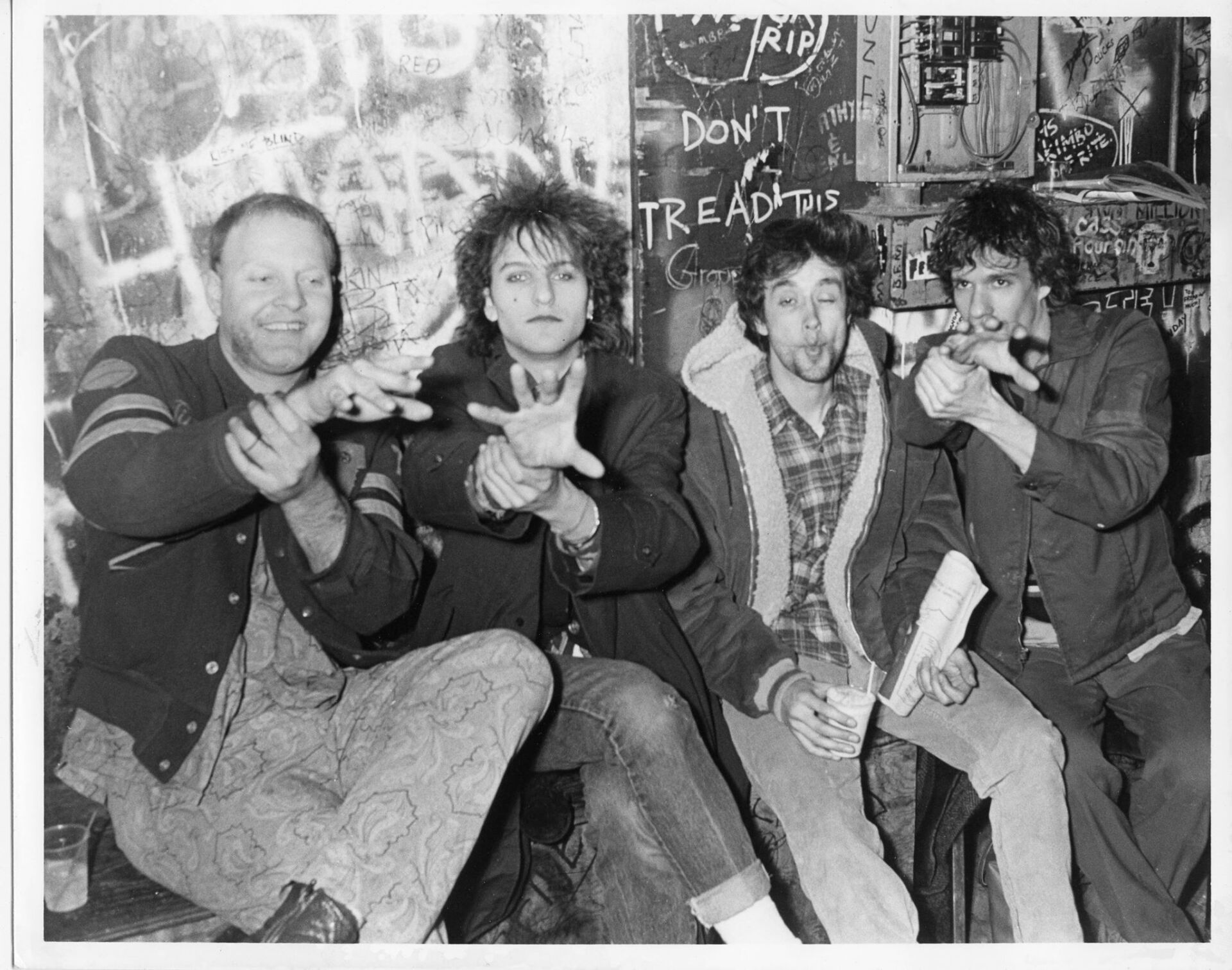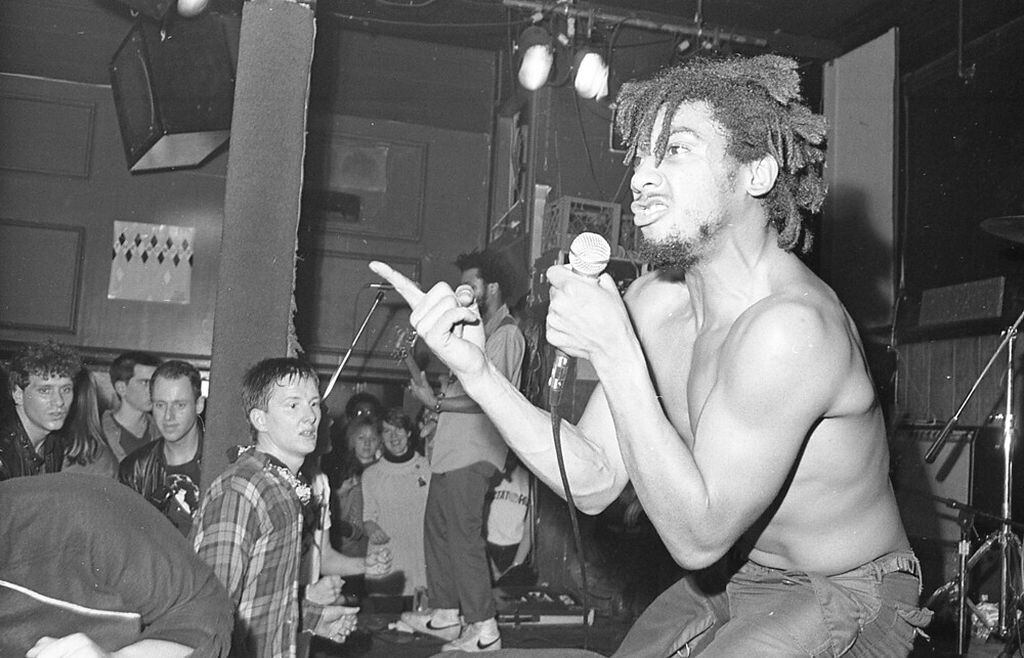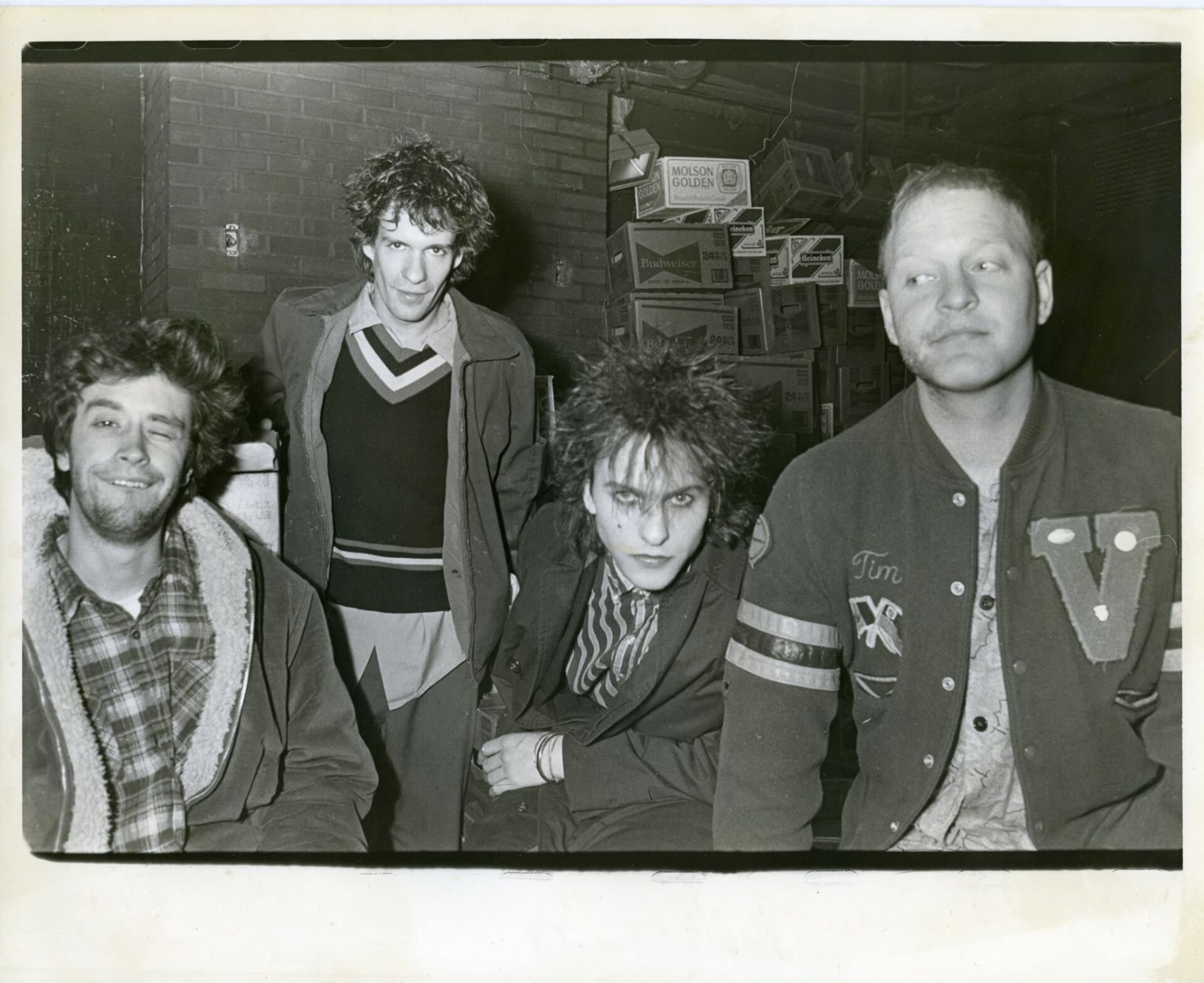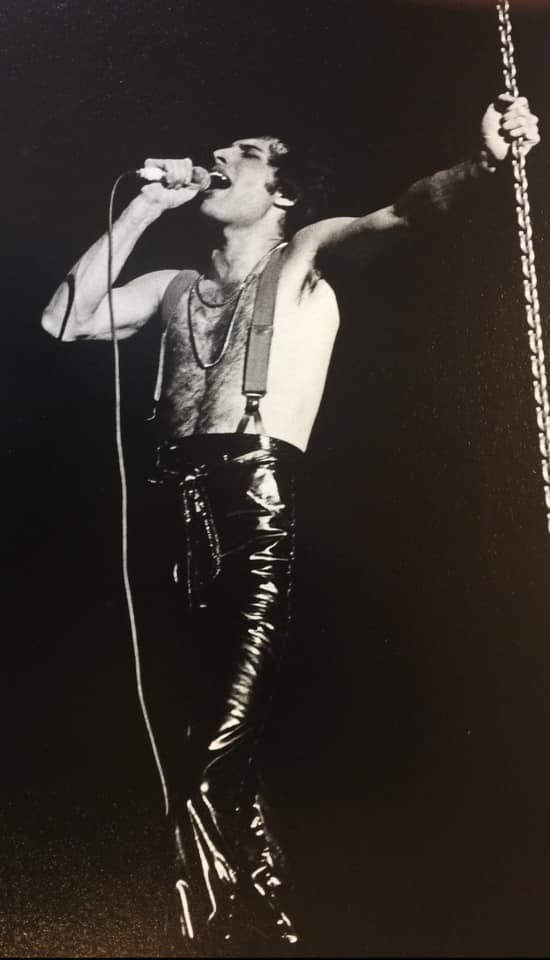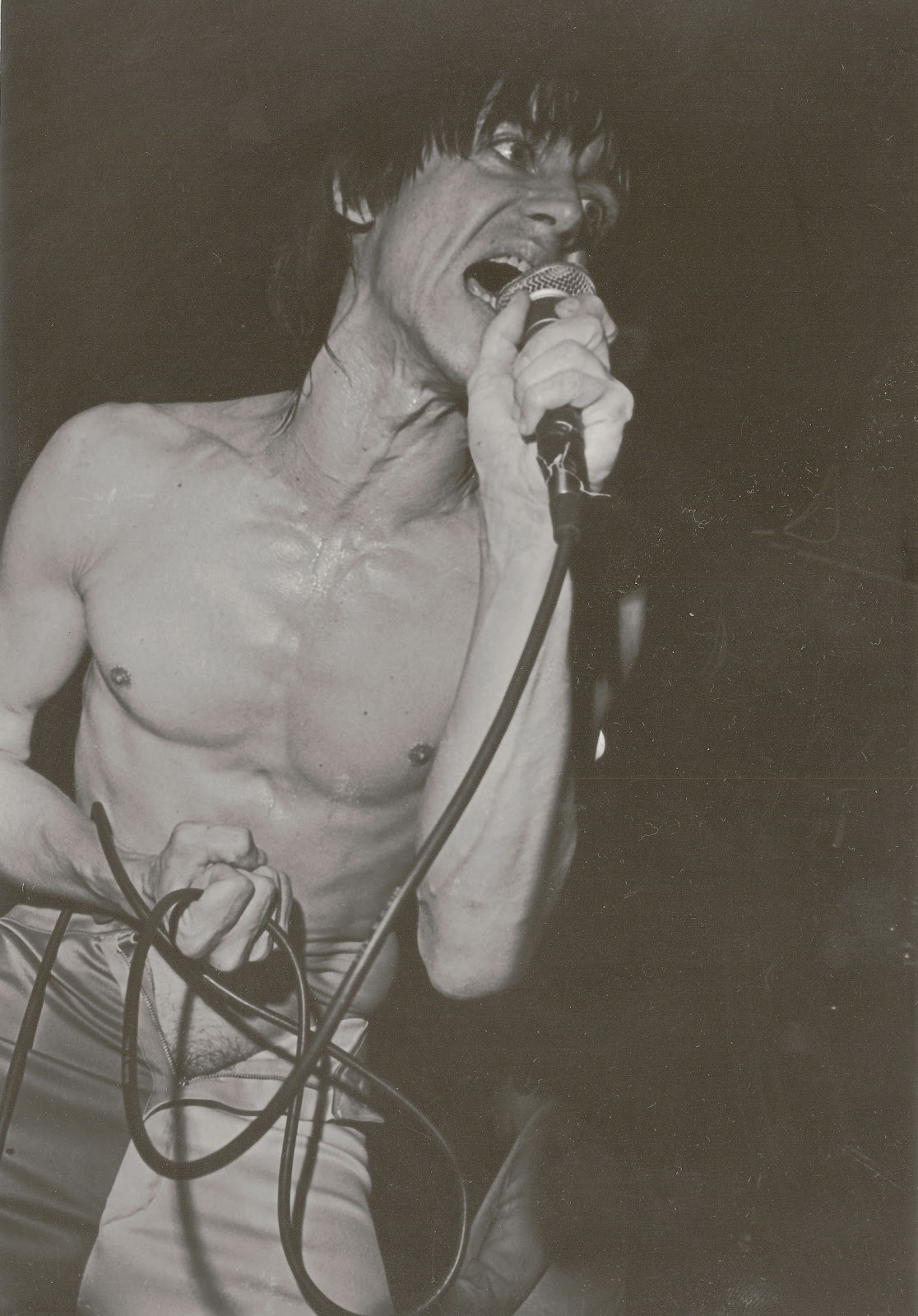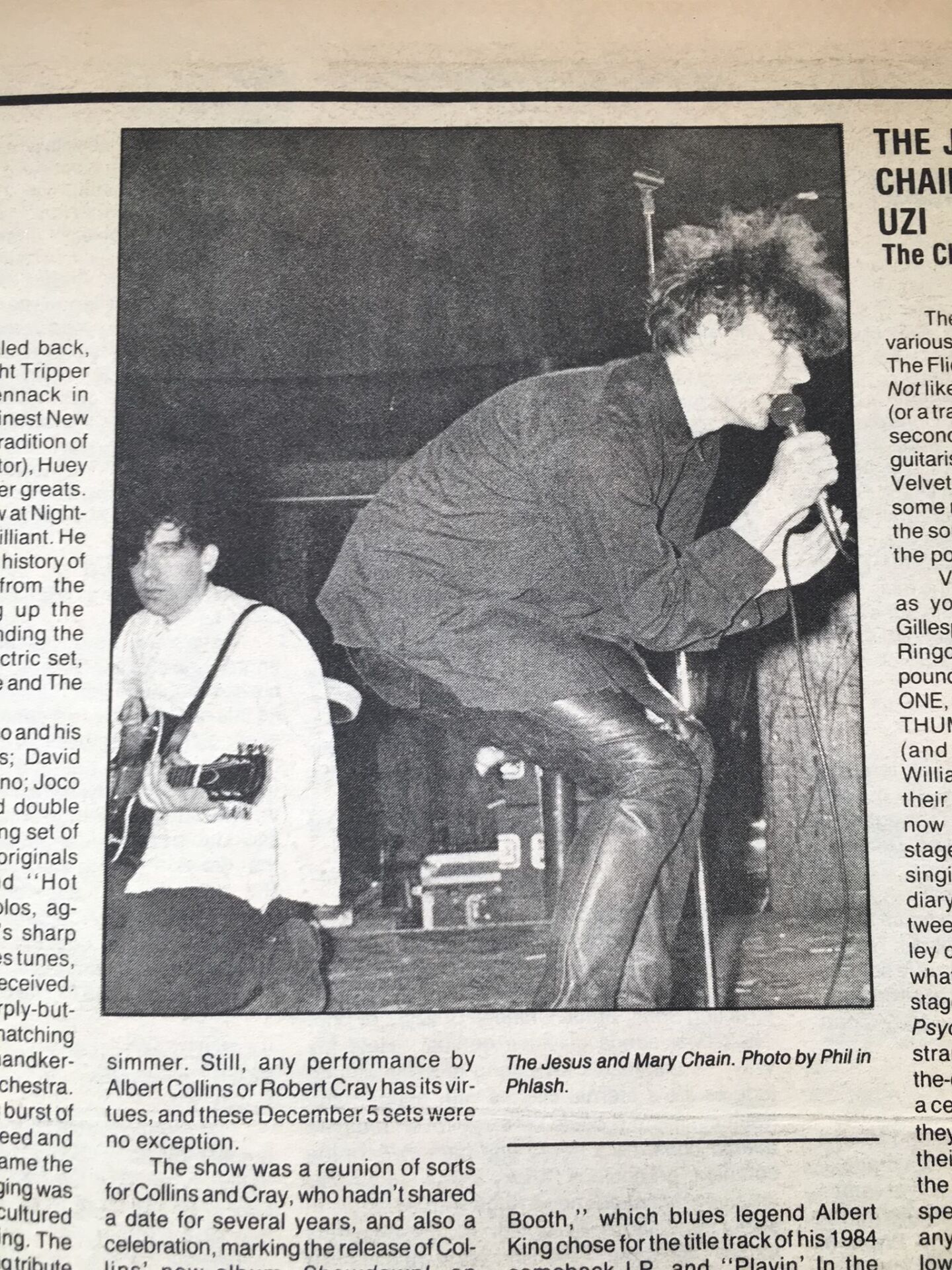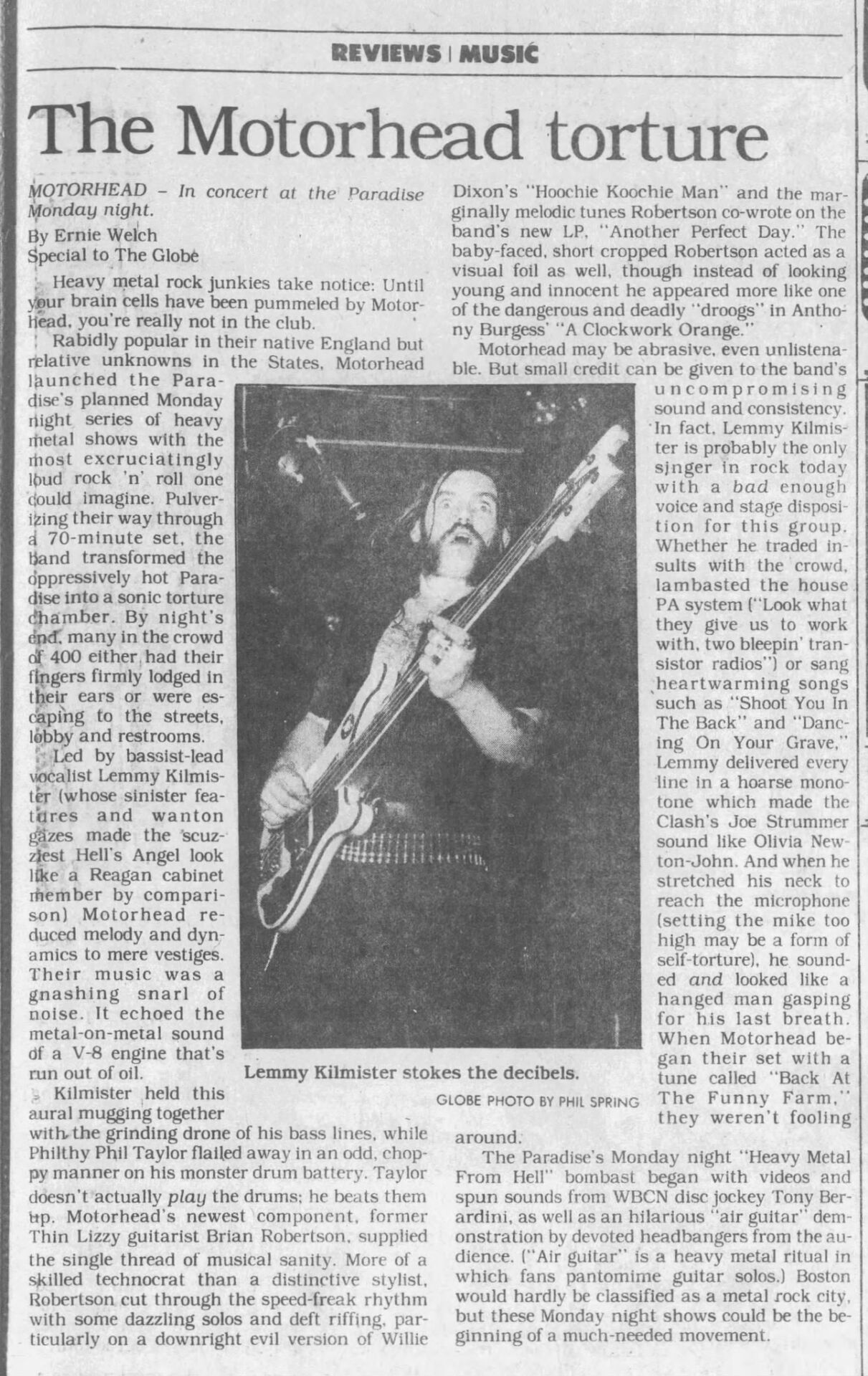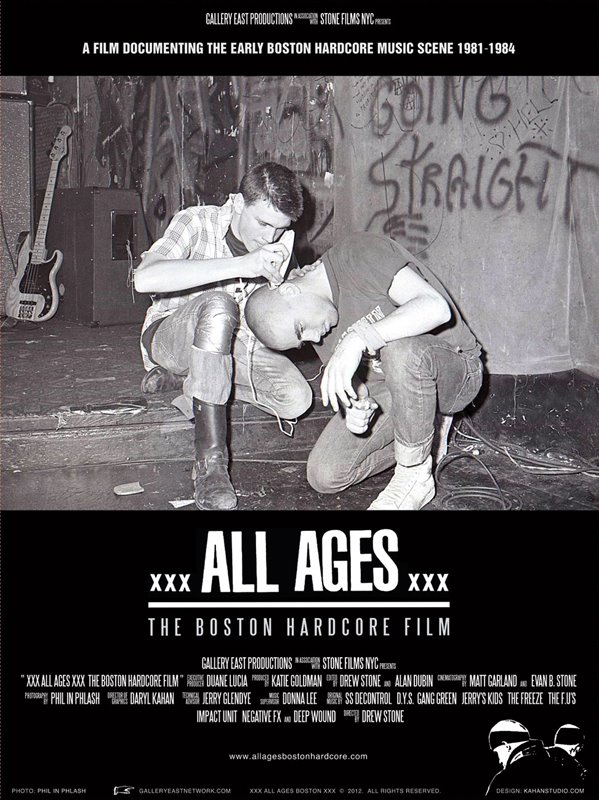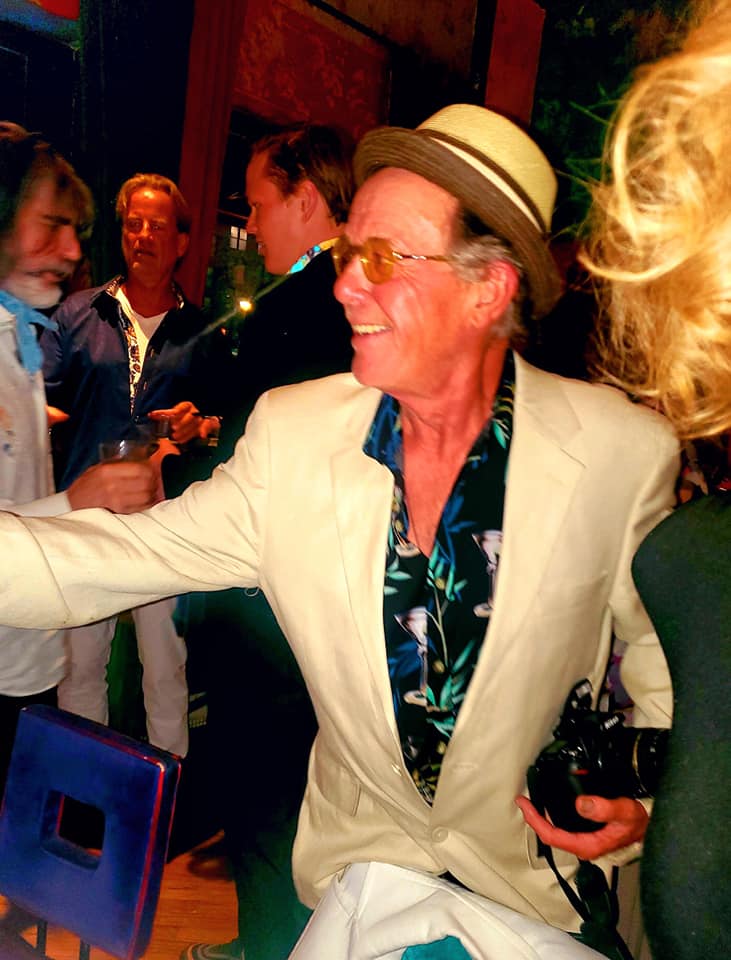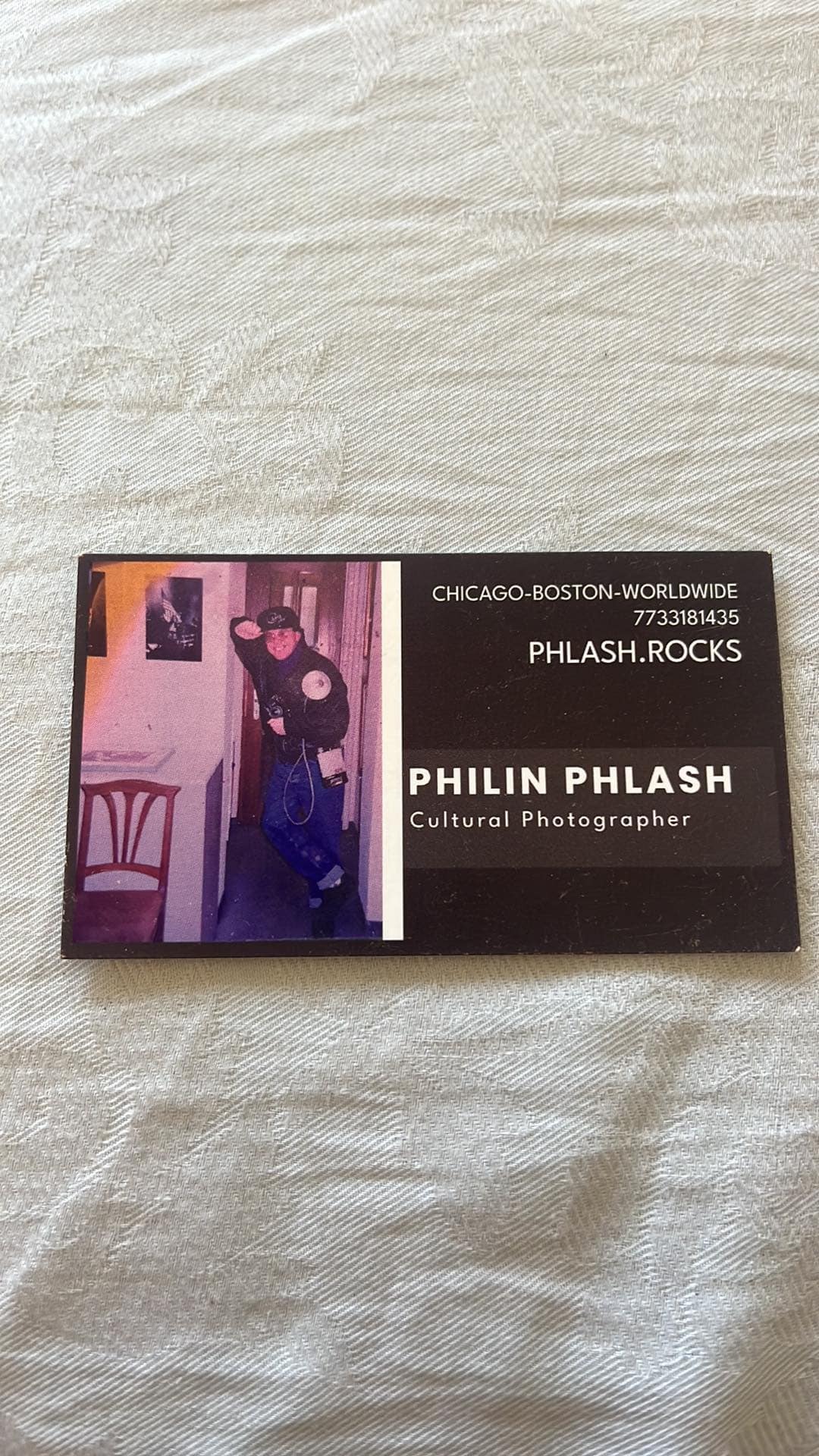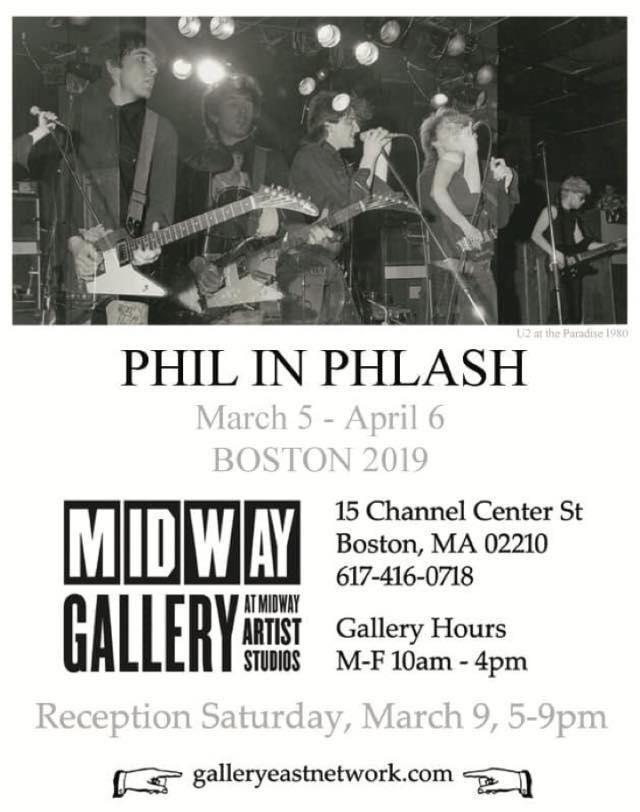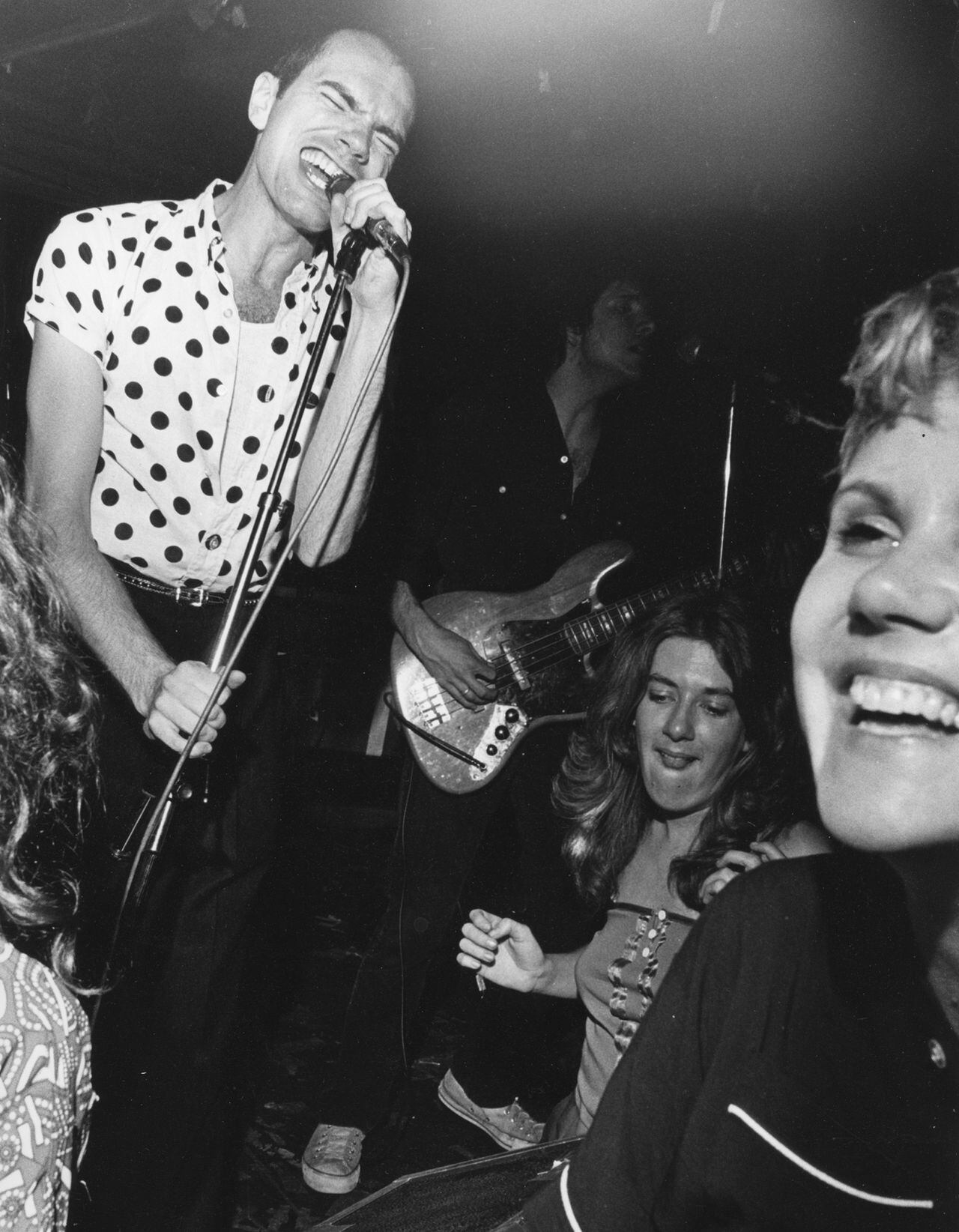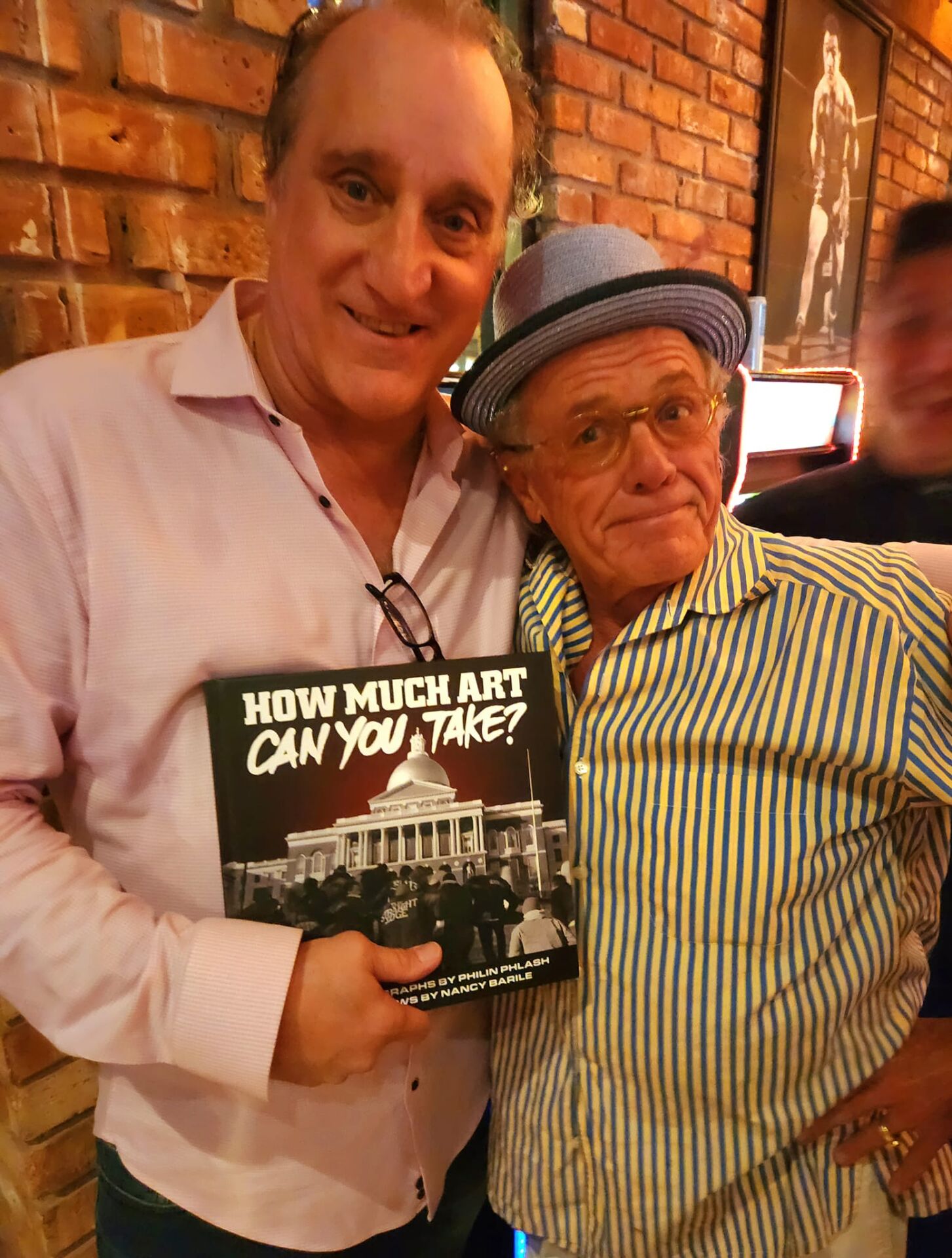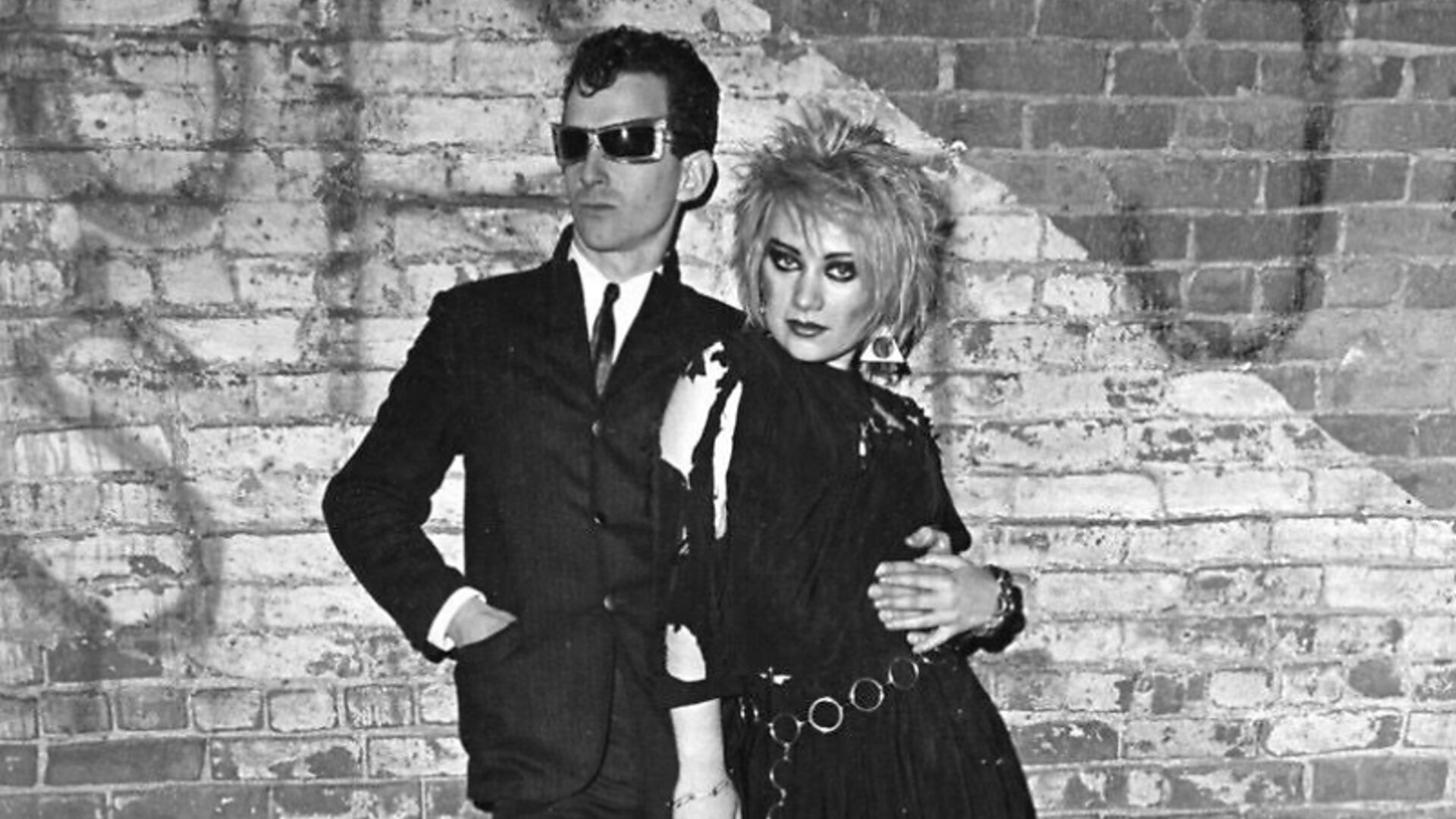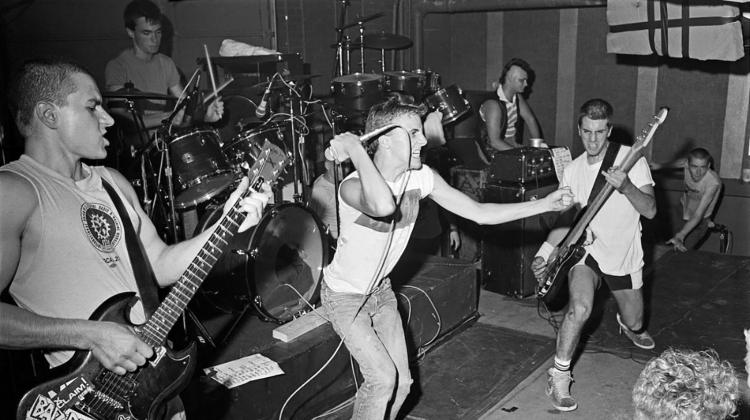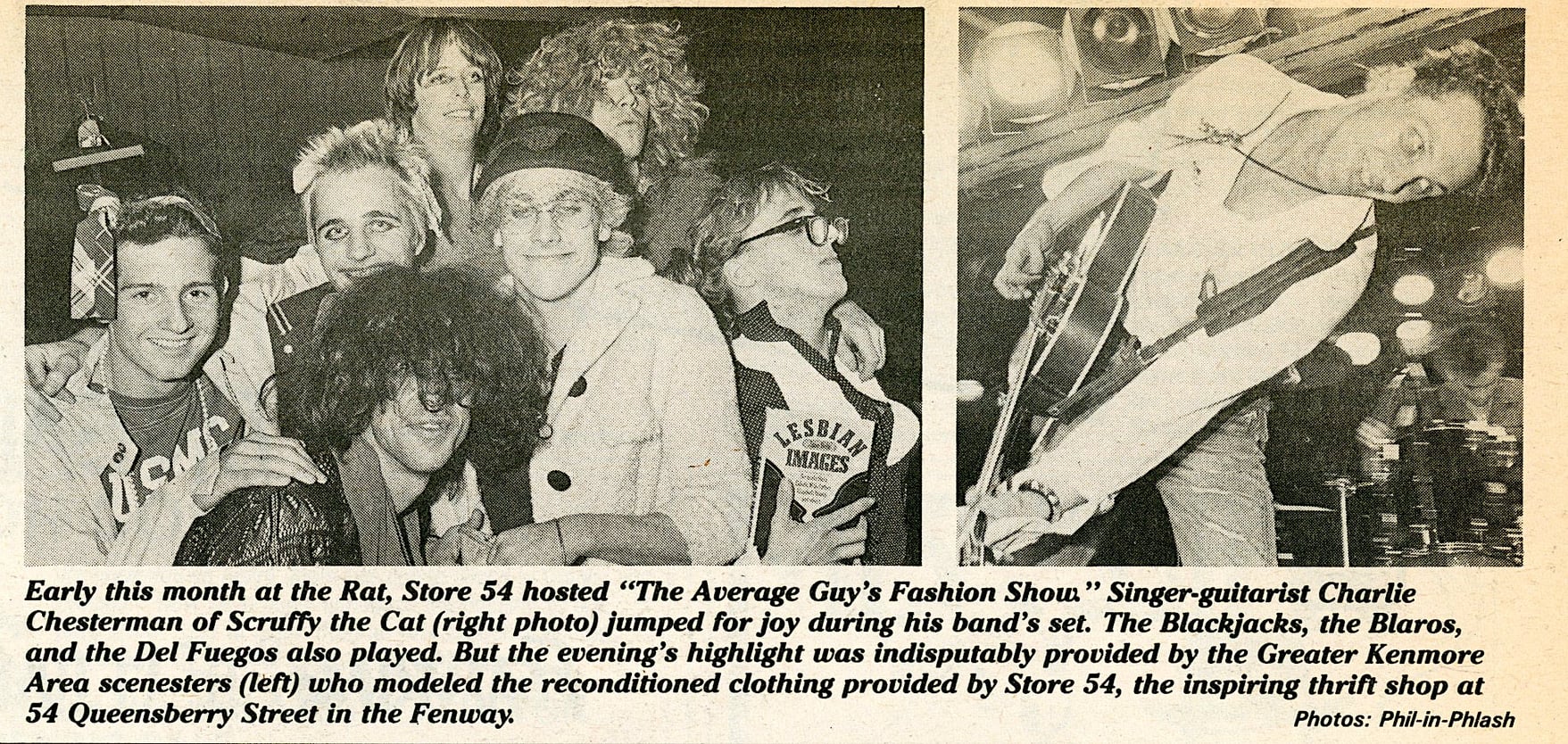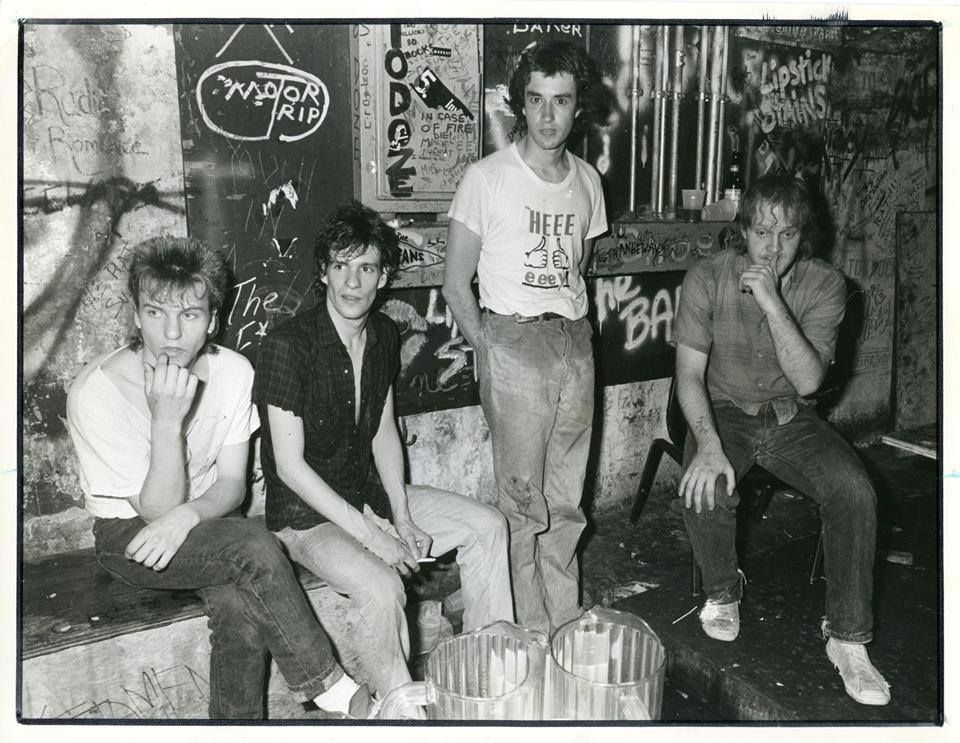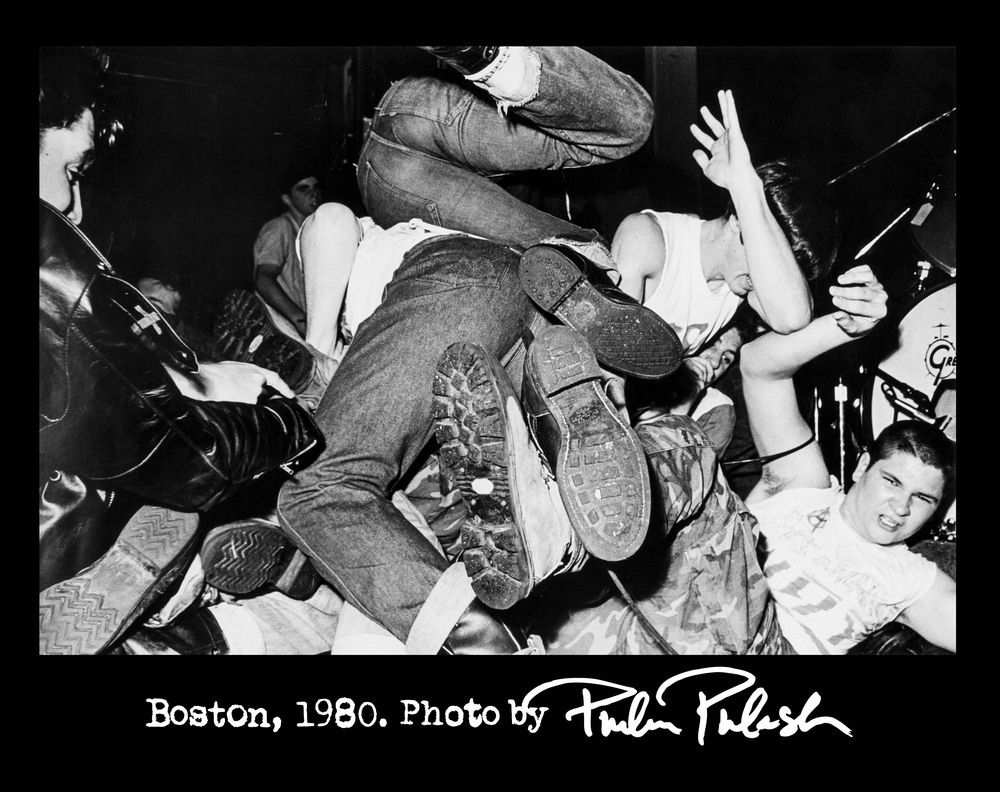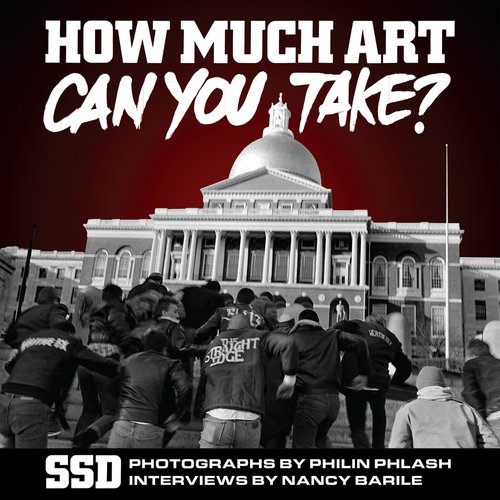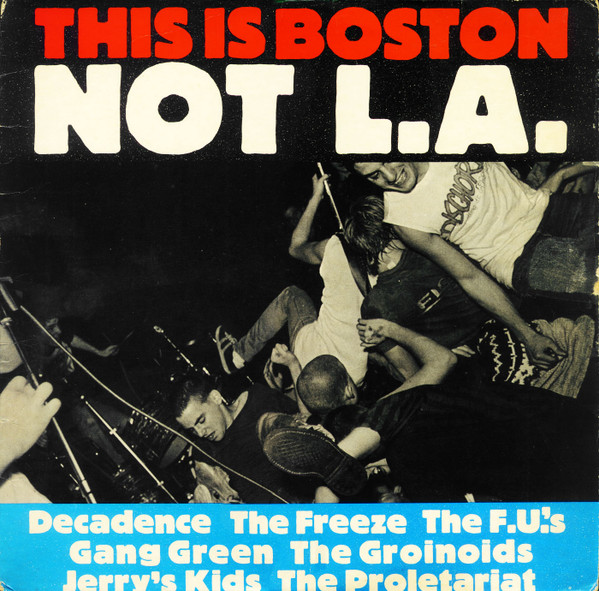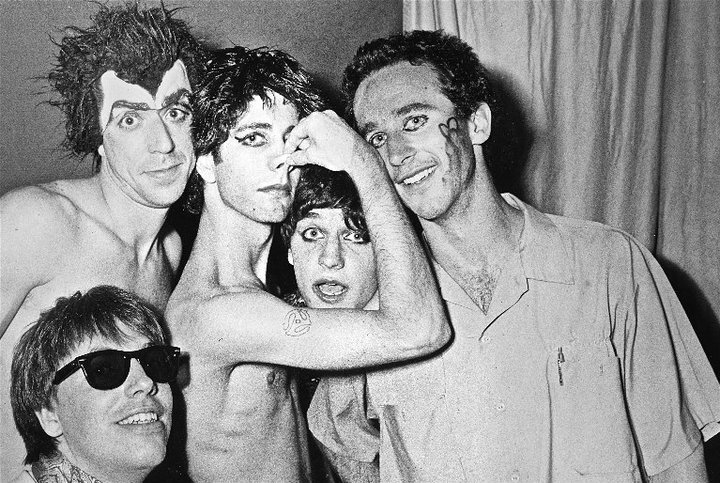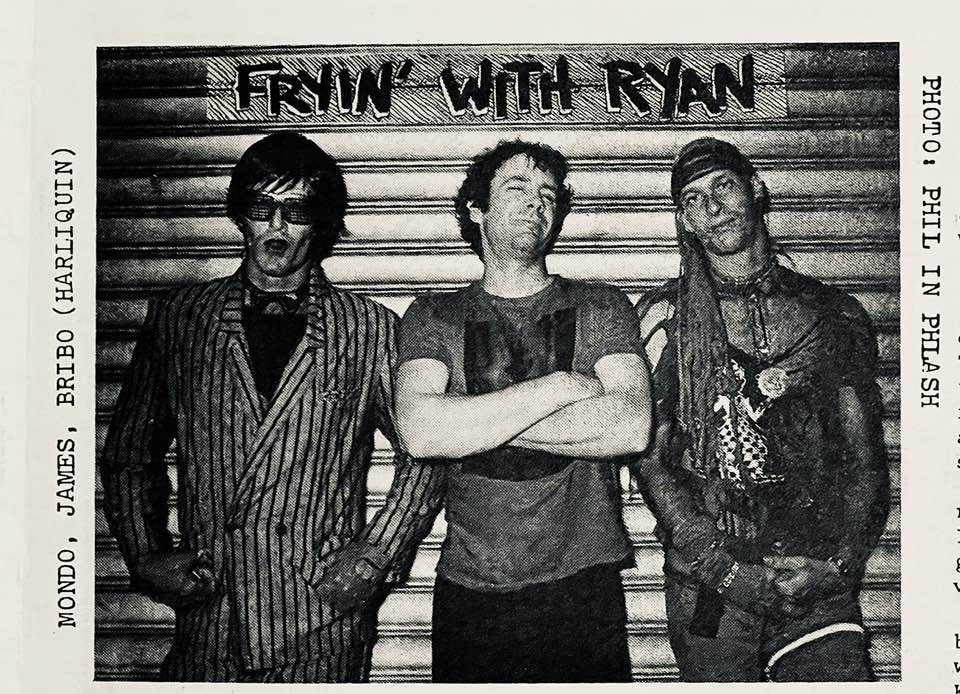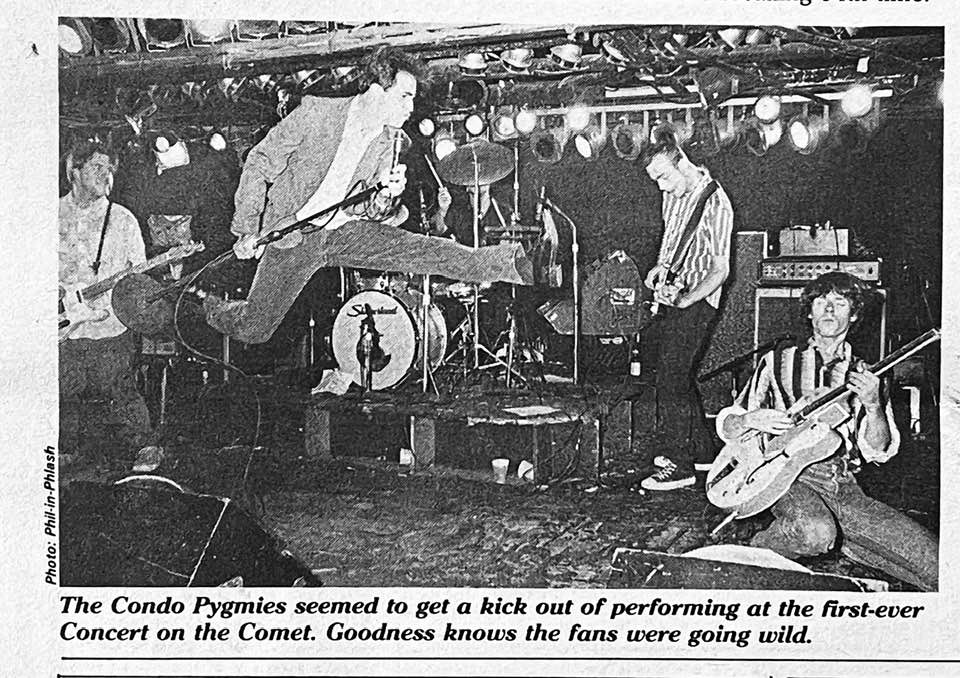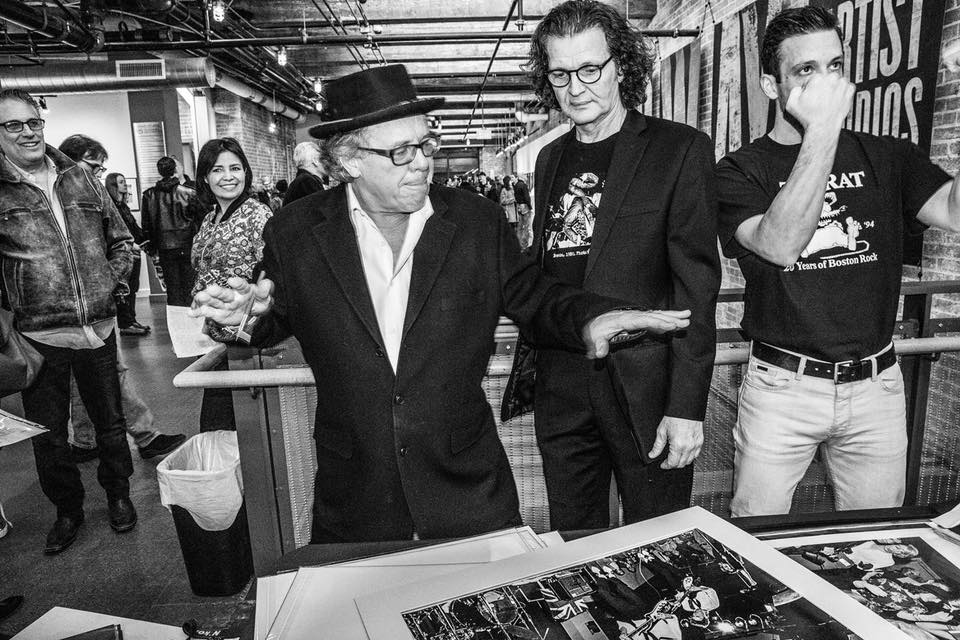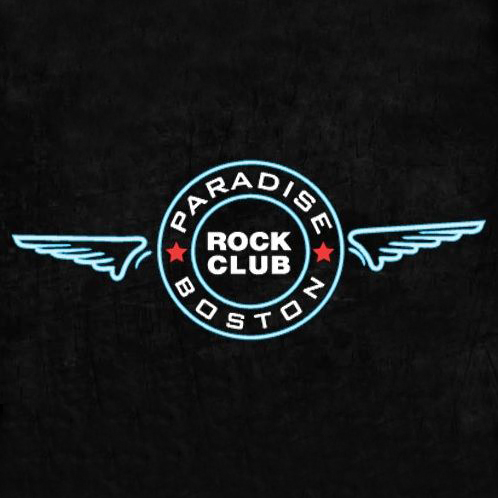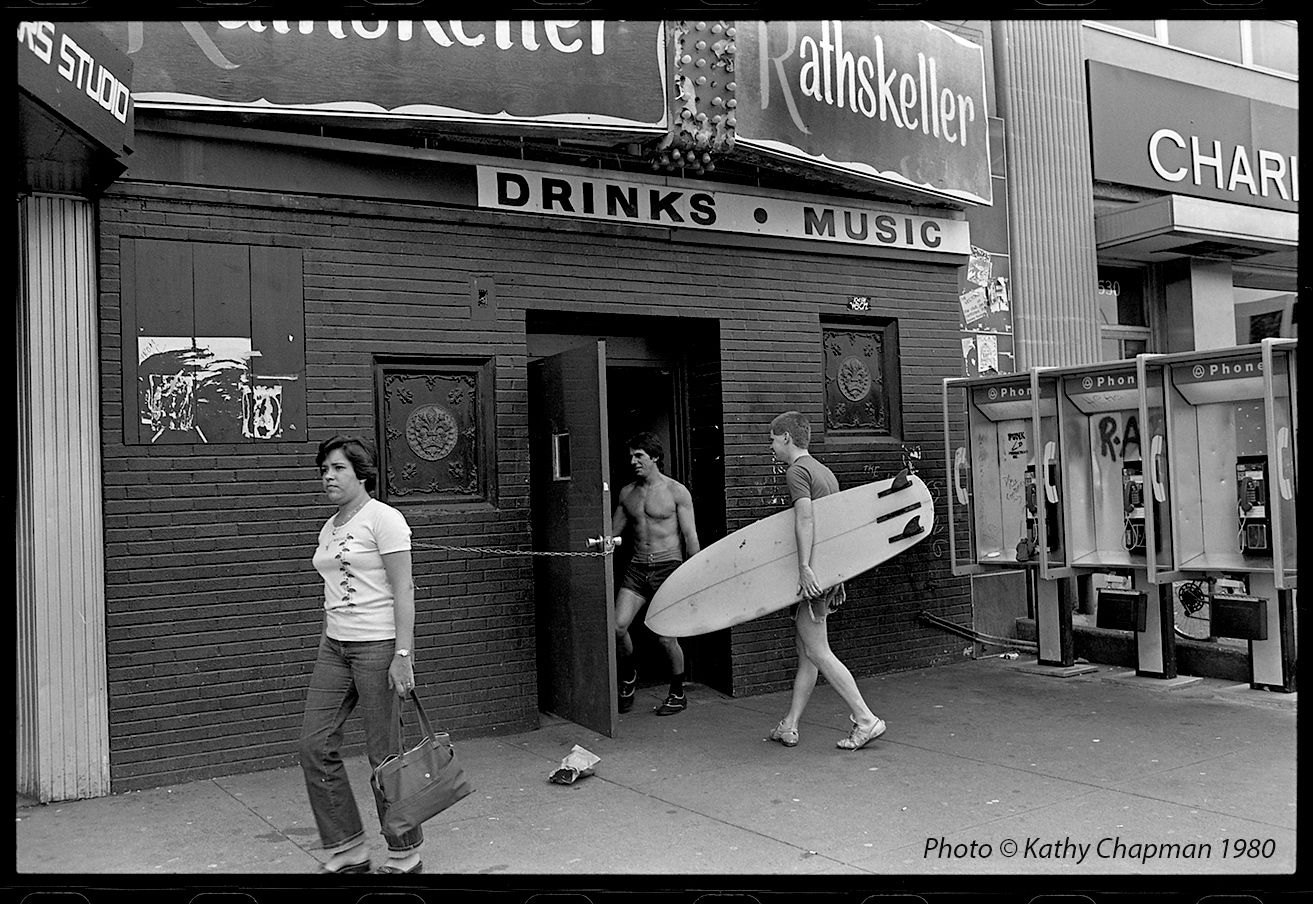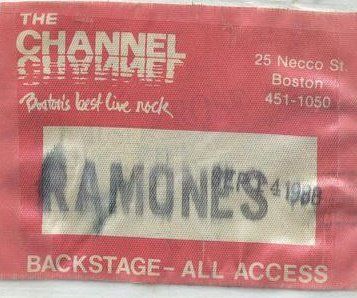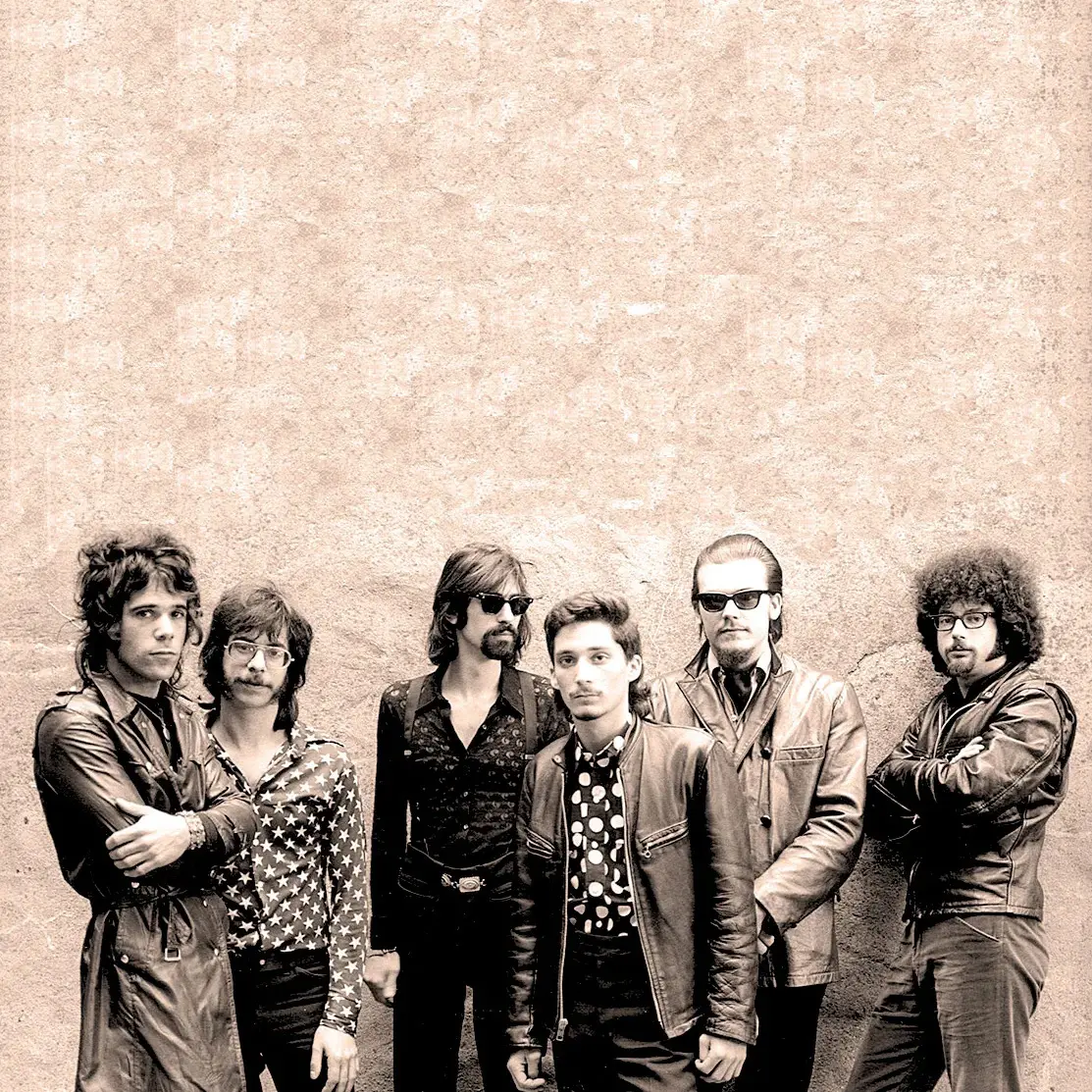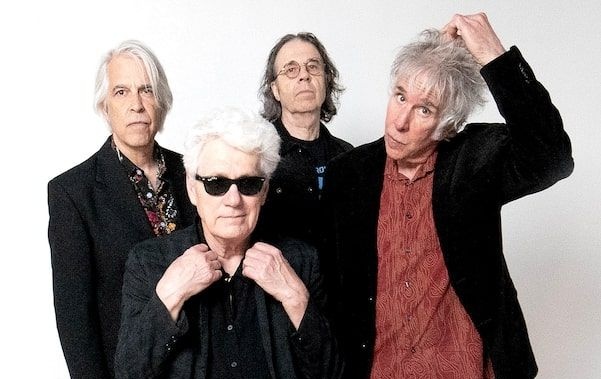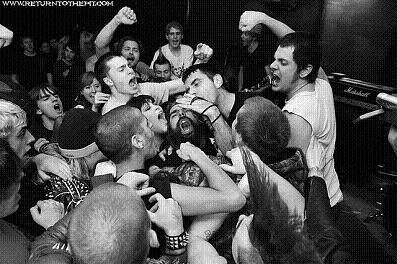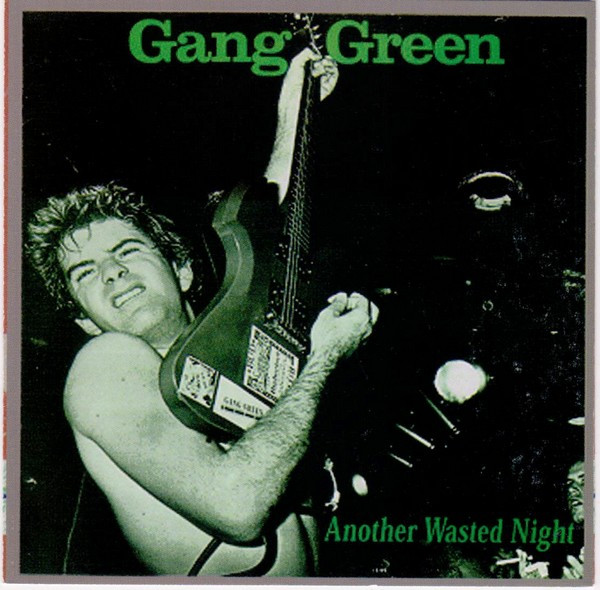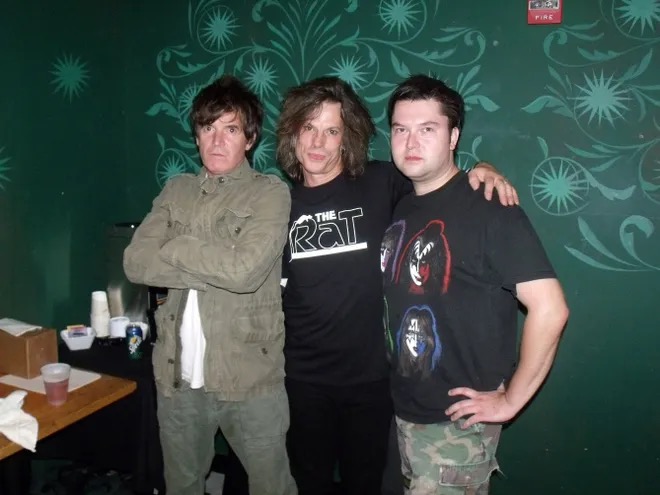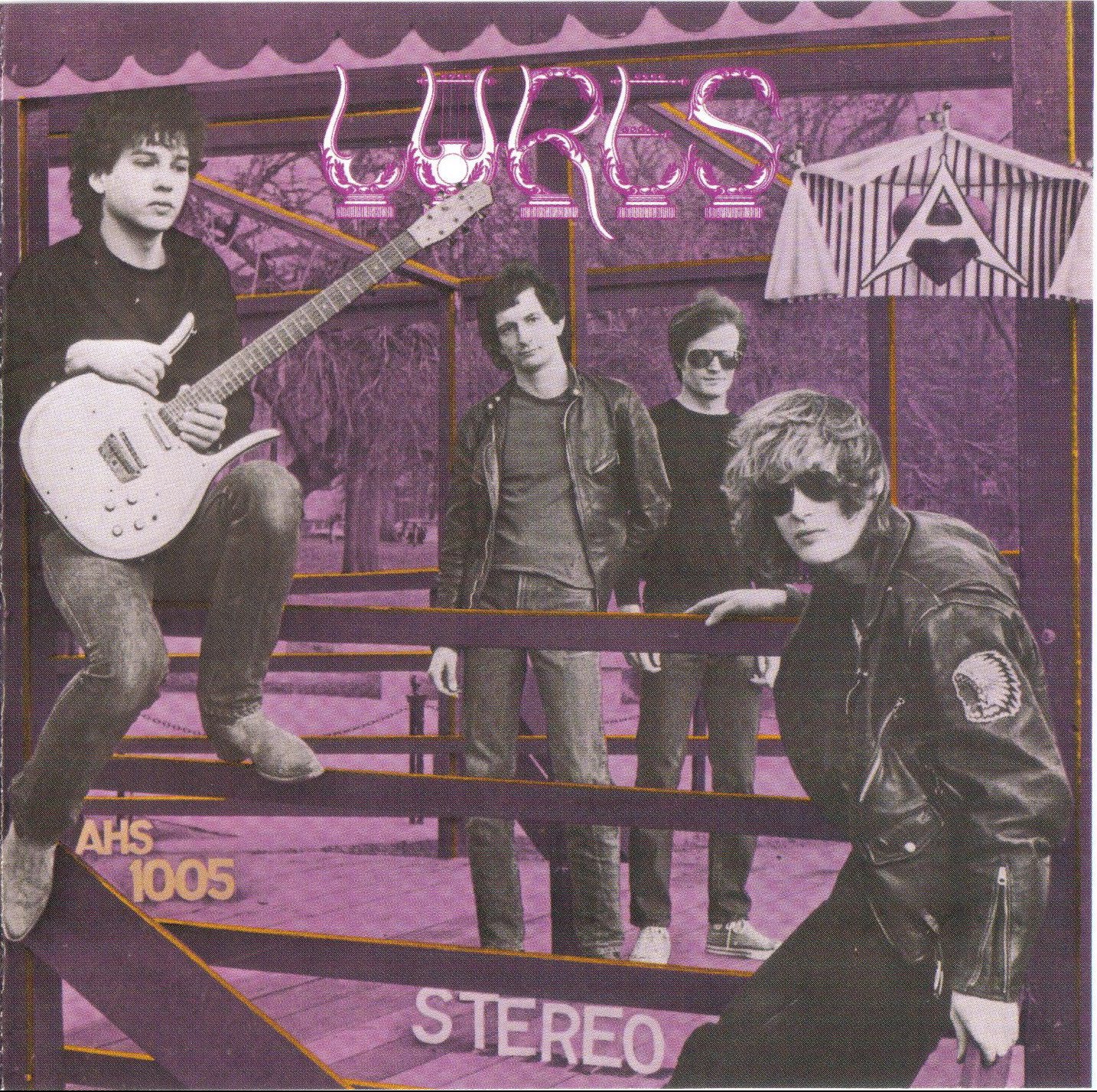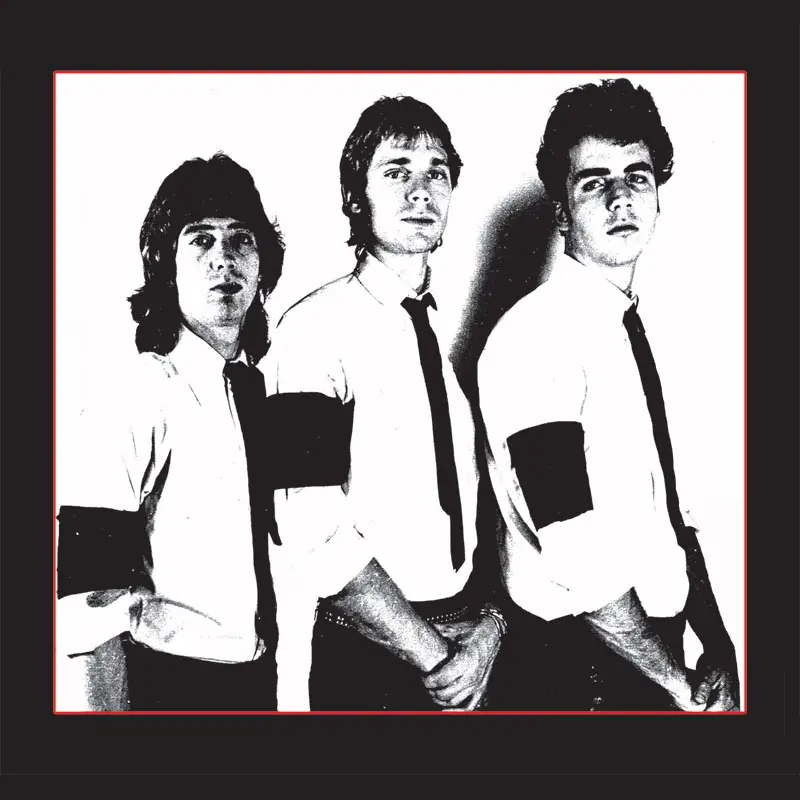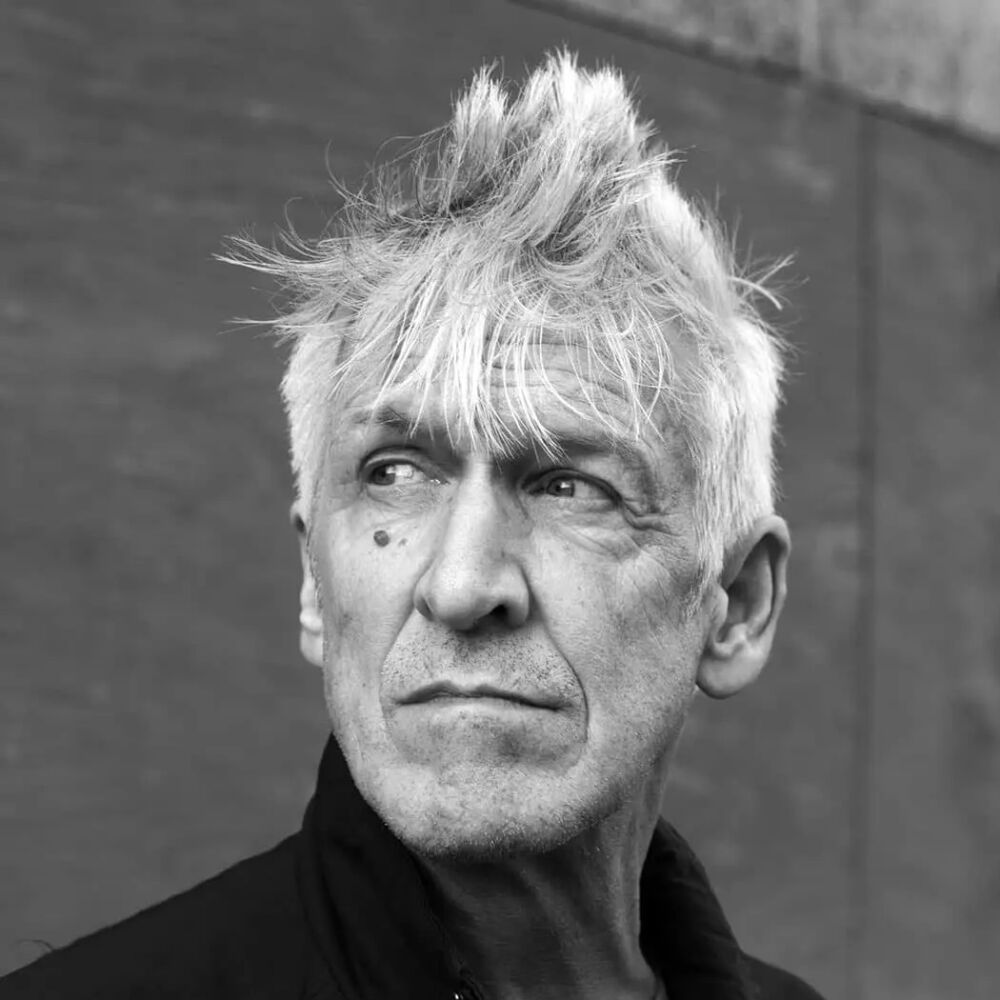Philin Phlash
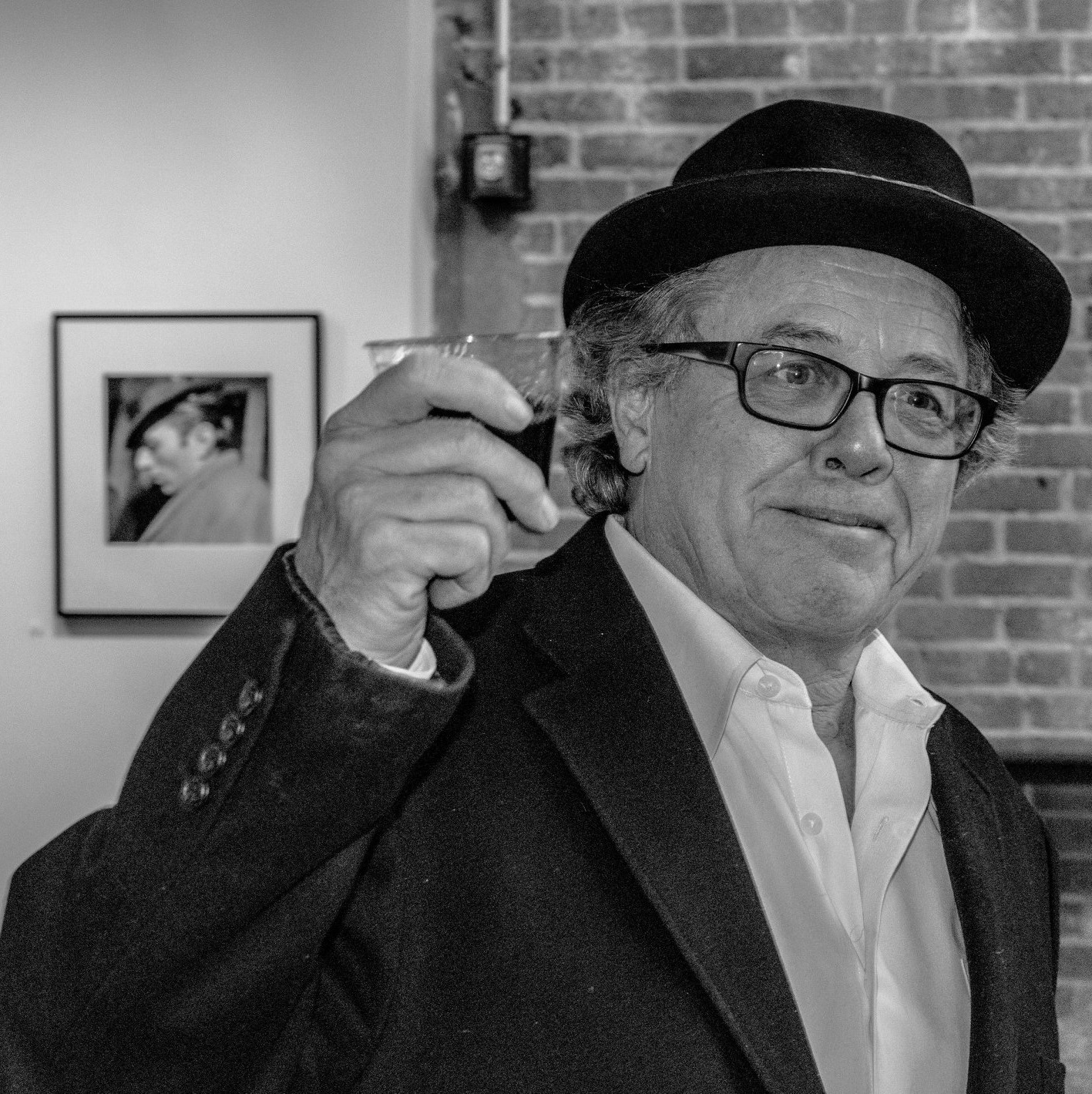
For angst-ridden rockers in Boston between the mid- ‘70s and the late ‘80s, leaving certain clubs battered, bruised, bloodied or black-eyed was par for the course, the result of an elbow to the ribs, a knee to the groin or a fist/foot to the face since “dancing” was like rules-free rugby. And while most who hit such spots did so for a few hours of full-contact fun and booze-fueled abandon, Philin Phlash frequented them for an entirely different reason: to photograph all the mania and mayhem from the peril of the frontlines. In his unflinching efforts to capture the frenzy on film, he was often the victim of said elbows, knees, fists and feet, which he wrote off as nothing more than an occupational hazard.
What Charles Daniels was to Boston-rock photography between the late ‘60s and mid-‘70s, Phlash became to the city’s punk, postpunk, hardcore, new wave and indie/alt scenes, documenting local, national and international bands and chaotic crowds that included mohawk-doo’d punks, Docs-booted skinheads, skinny-tied new wavers, gothed-up art-school students and khakis-clad college kids alike. But while Daniels was especially known for his shots of artists during their off-stage moments, Phlash is arguably most famous for the bold-as-brass snaps he took while just feet from the stage – from within the belly of the beast, as it were – at places like The Rathskeller, The Channel, The Underground, the Paradise Rock Club, the Bradford Ballroom, Metro and Spit.
“It was anarchy, it was crazy interaction, and you had to be close to it to feel it,” he told Susie Davidson of Time Out in 2020, adding that he viewed capturing the ferocity and raw explosiveness of the shows as a duty of sorts. “Like the line from The Blues Brothers movie, I felt I was on a mission from God, and my assignment was to get the best photo I could,” he said.
Musical, Photography beginnings
Born Philip Spring in South Boston and raised in the Wollaston neighborhood of Quincy, Phlash’s first foray into what became his lifelong passion was during his senior year at North Quincy High, when he took a photography class, got his first camera and began building the portfolio that he used to apply to the Massachusetts College of Art & Design (aka MassArt). Like millions of other Boston-area teens of his generation, his musical diet from the early to mid-‘70s consisted of local faves like Aerosmith and The J. Geils Band and British heavyweights such as Led Zeppelin, Jethro Tull, The Rolling Stones and The Beatles.
In September 1974, he enrolled at MassArt, where he majored in photography, minored in sculpture, won the Most Improved Photography Award – the prize money from which he used to buy his first darkroom equipment – and earned his BFA (in 1978). While there, he co-founded the art collaborative Punkt Data, had his first one-man show at the Punkt Data Gallery and began using the professional name Philin Phlash, a reference to the photography term “fill in flash” (a common technique when a photo doesn’t have enough light). The first photo for which he was credited under his irresistibly clever new moniker appeared in the MassArt magazine Skunk Piss.
Boston photojournalism years
Phlash began photographing bands at clubs while he was still a student, but after graduation he became a ubiquitous presence at venues in Boston and Cambridge, bouncing between them night after night to chronicle the scene’s intensity from an in-the-pit perspective. Among the first acts he shot were Mission of Burma, Nervous Eaters, The Freeze, Gang Green, The Boom Boom Band, The Neighborhoods, Lyres and La Peste. Over roughly 10 years, he took thousands of shots from within Boston’s darkest, most cacophonous spaces using bare-bones, pre-digital equipment that demanded keen instincts and sharpshooter-level precision. “I didn’t have a telephoto lens,” he told Time Out’s Davidson. “I had a 35 mm lens. And it wasn’t digital, or automatic focus. I focused – in the midst of getting kicked in the head. It really makes you evaluate.”
Ironically, given the global recognition he’s received for his coverage of the punk/postpunk scenes in the late ‘70s, Phlash has never thought of himself as a “punk photographer” or even a “rock photographer.” Instead, as he told The Boston Globe’s Jim Sullivan in 2020, the clubs were a “motivator, a tool to get me out there” in order to accomplish his broader objective: documenting the oft-unreported happenings in the hidden parts of urban America, much in the way that nightlife photographers Weegee and Brassaï did in the ‘30s, ‘40s, ‘50s and ‘60s.
“After I took my first class on the history of photography, I was most interested in Weegee and Brassaï and wanted to walk in their steps,” he says. “And they both had a different name than what they were born with, so I became Philin Phlash to be more like a superhero, like Clark Kent and Peter Parker – who both worked for newspapers! I asked myself, ‘Who’s doing what Weegee and Brassaï did nowadays?’ No one was carrying a camera at night in the ‘70s, so I set the goal of carrying mine for 15 years every night and I doubled my output over the next 45 years or so.”
As part of his process, he often took shots of artists when they were off guard since he knew that provided a better sense of the frenzied scene than staged portraits ever could. That unorthodox, reality-exposing approach “didn’t come without trouble,” however, he told the website Dirty Old Boston in 2019, since it resulted in him being booted from clubs on a regular basis. “I’ve been thrown out by more bouncers than a card counter in Vegas,” he said, acknowledging his rather notorious reputation among bouncers and doormen.
Publications, This Is Boston, Not La, All Ages Documentary
For eight years, Phlash’s photos ran in The Boston Phoenix’s weekly “Cellars by Starlight” section and he contributed to The Boston Globe, other newspapers and a variety of fanzines for much of the ‘80s. Among his most widely known pics is one he took of Gang Green at Streets in Boston that became the cover of This is Boston, Not LA, a 30-track compilation of material from local hardcore bands released by Modern Methods Records in 1982.
In 1985, when Phlash’s work was part of the “Boston Now” exhibition at the Institute of Contemporary Art, the critically acclaimed documentary All Ages: The Boston Hardcore Film, which details the city’s hardcore scene from 1981 to 1984, featured over 120 of his images. In 2023, more than 170 of his photos were included in the book How Much Art Can You Take?, published by Trust Records about the Boston-based hardcore group SSD (a significant force on the scene from 1981 to 1985). Phlash’s brother David, aka Springa, was the lead singer.
Move to Chicago, Career refocus
In mid-1988, Phlash moved to Chicago after WET Gallery – where he had his first major one-man show in 1981 – relocated there from Boston. Asked why he decided to leave his hometown for a city he’d visited only once before, he said he’d decided to shift gears in his career and the move west provided the perfect opportunity to do so. “I wanted to be an artist-photographer, not just a newspaper photojournalist,” he said in May 2024. “And there was a loft with an incredible darkroom in the same building as the new WET Gallery space at 119 Peoria Street, so that was ideal.”
He lives in the Windy City to this day – “Once I found Chicago, they could not get me out,” he says – but even after living there for over three decades, he’s never forgotten his New England roots. “I’m a Bostonian, so I’m always on the go,” he told The Boston Globe’s Jim Sullivan in 2020. “These people from the Midwest are always half a step behind me.” In recent years, Phlash has begun a second career doing something that’s as far removed from photography as an activity could possibly be: dog training. “Everyone is a photographer these days so there’s really no need for me,” he says, adding that he has “dog telepathy” and considers himself a “professional dog player” these days. “Dogs need me, though, so I devote my energy to them.”
Publications, Exhibitions
Since his move to Chicago, Phlash’s work has gained significant global acclaim, been published in hundreds of national and international publications and appeared in a number of exhibitions in the US and Europe. In 1990, several of his photos were selected by the photography curator at Bibliothèque nationale de France in Paris, Jean Claude Lamage, for display at Photokina, a popular photography trade show held in Cologne, Germany from 1950 to 2018.
His work has been exhibited in Boston several times since he left the city, including in a show called “Phlash” in March and April 2019 at Midway Gallery, sponsored by Gallery East and Midway Artist Studios. Most recently, 60 of his photos were displayed in October and November 2020 at Time Out Market in Boston in the exhibition “Fenway Phlashback,” curated by Duane Lucia, director of The West End Museum. One of them was of Mitch Cerrulo, the infamously imposing longtime doorman at The Rathskeller, and another was of U2 at the Paradise Rock Club in December 1980 (their Boston debut). “U2 was definitely nobody then,” Phlash wrote in Boston magazine in 2015. “And all of a sudden it was a different story. There were U2 shows at the Paradise a year later that I couldn’t get into. They were sold out, or I wasn’t shooting for somebody so I didn’t have an in. As far as I’m concerned, their love of Boston came from that first show.”
Career reflections
Looking back, Phlash says it’s hard to believe that it’s been more than three decades since he was hitting the Boston scene and elbowing his way into the thick of the crowd to get the best possible shots. “It does not seem like it’s been over 30 years. I think to myself, ‘There’s no way I could have taken all those photographs,’” he told Time Out’s Davidson, adding that at the time he never considered his work to be particularly significant or representative of any particular group. “When I look back on it, I never thought that what I did was important or part of anything,” he said. “Still, there was a driving force there. When I took the photos, it was like I was engulfed in an energy force. I didn’t give it a thought.”
And that “energy force” remains to this day, he says, summoned whenever he hears certain bands. “Whenever I hear The Ramones on the radio, or The Clash, it still affects me in the same way,” he told Davidson. “But now, yeah, it’s music history. I have kids and I tell them stories about it, like all the people I met. I tell them, ‘All the people you hear now on TV, on the radio, well, I met Bryan Ferry, I met The Ramones, I met Joe Strummer. I was with them.’”
“I was known for getting shots that no one else got and for having exhibitions anywhere I could, like at the Rat and other clubs,” he said in May 2024 when asked how he’d summarize his years on the Boston scene. “And I gave back to the public. In a way, I was social media before social media even existed!”
(by D.S. Monahan)

